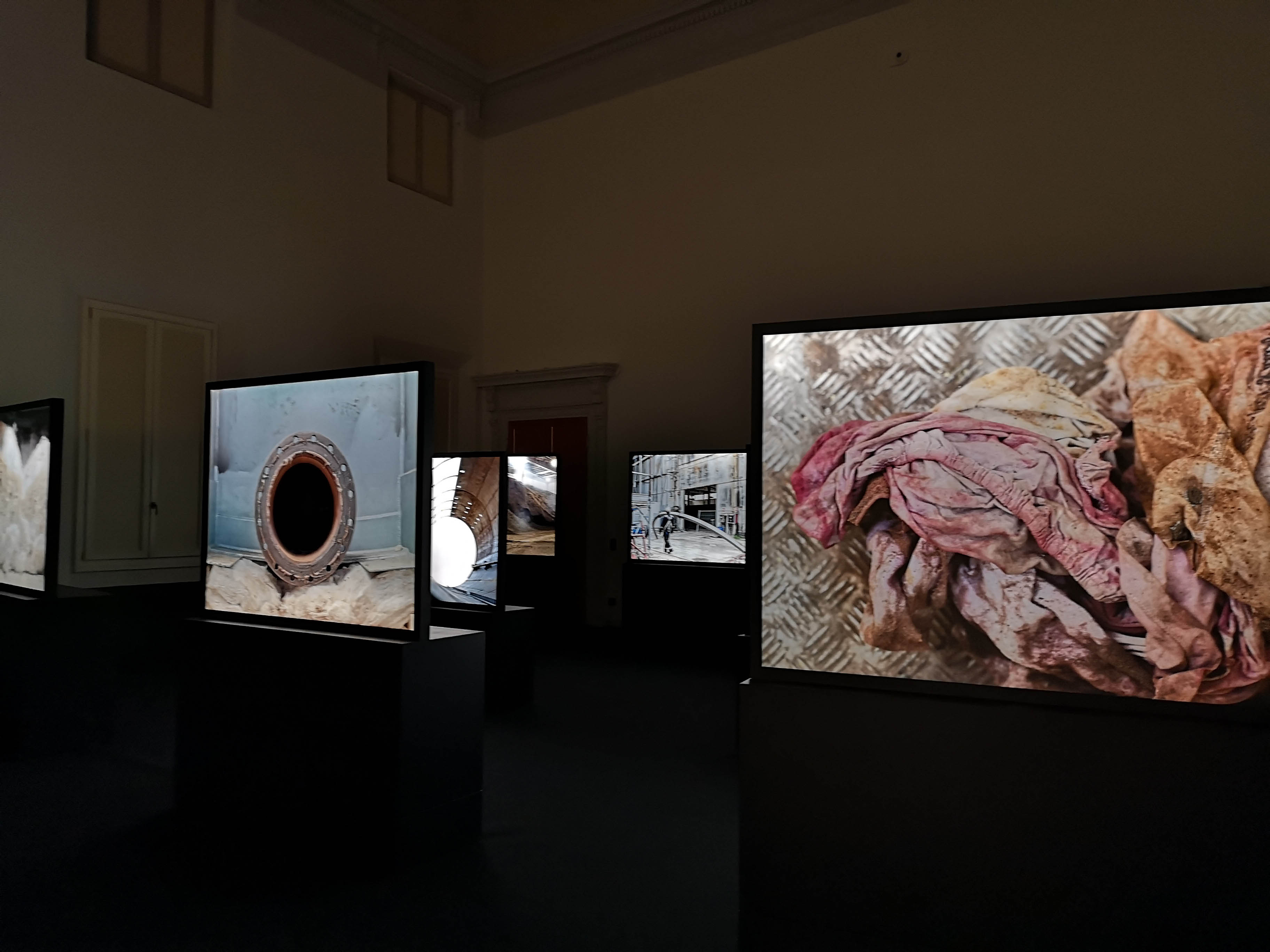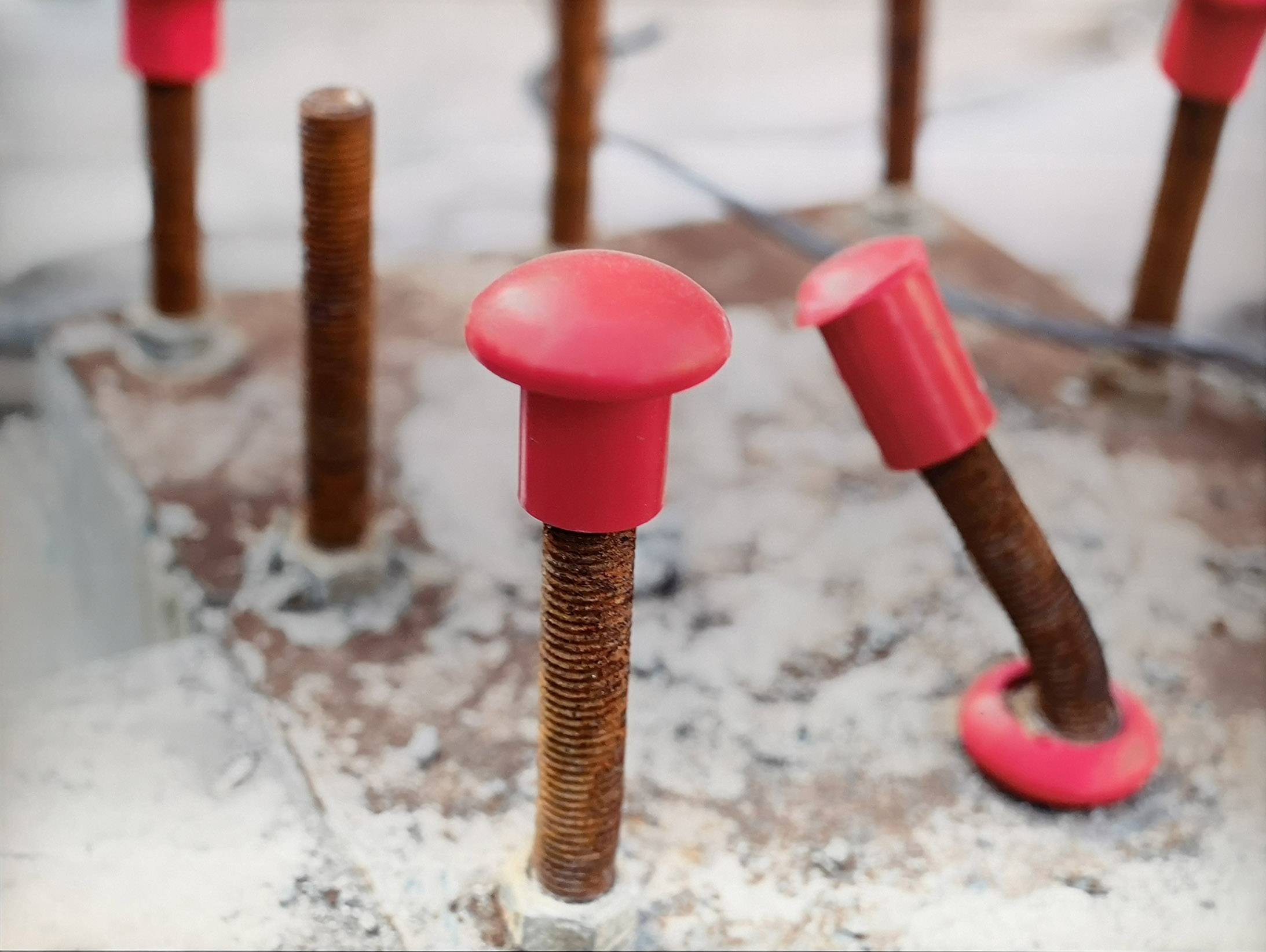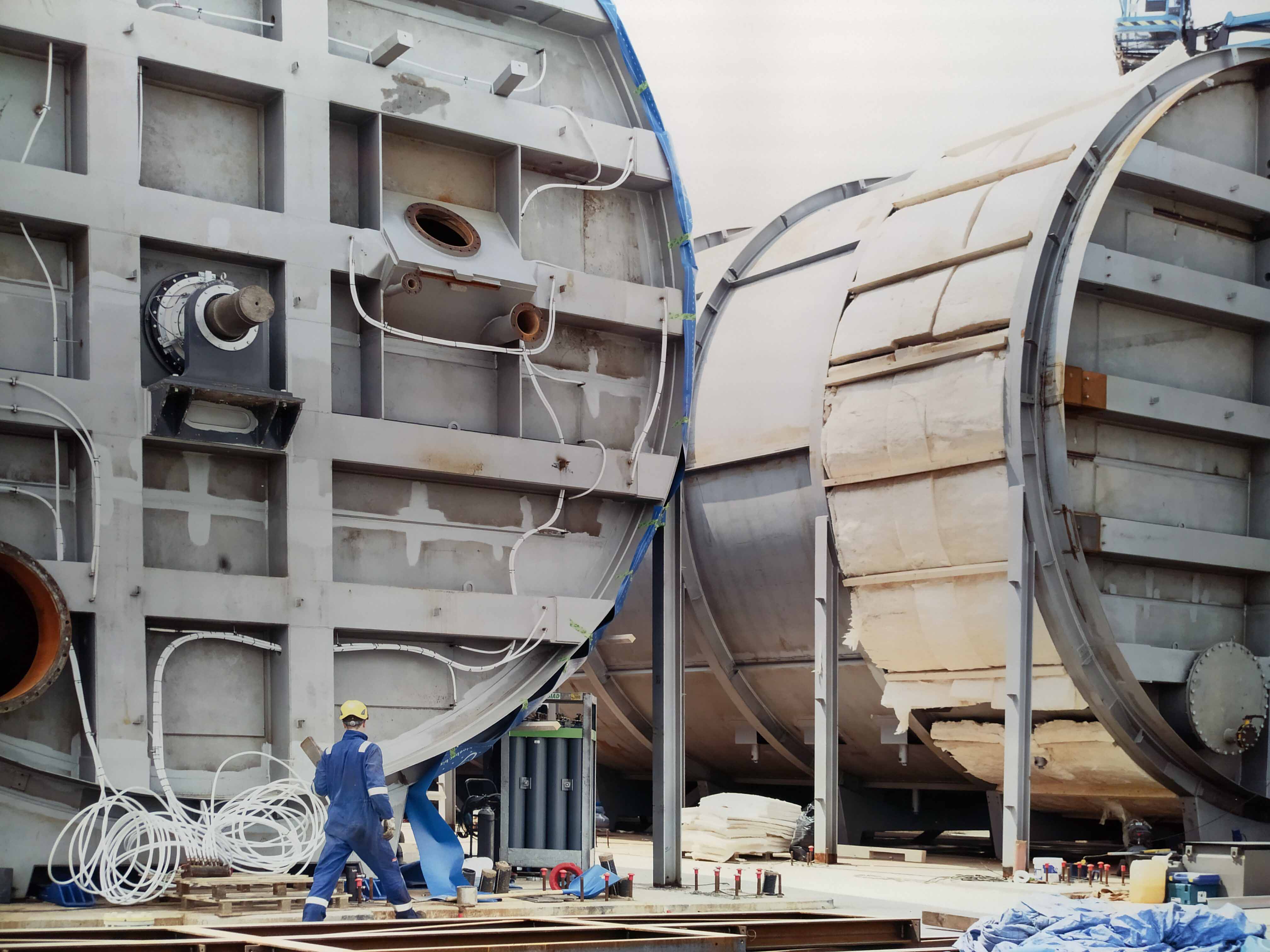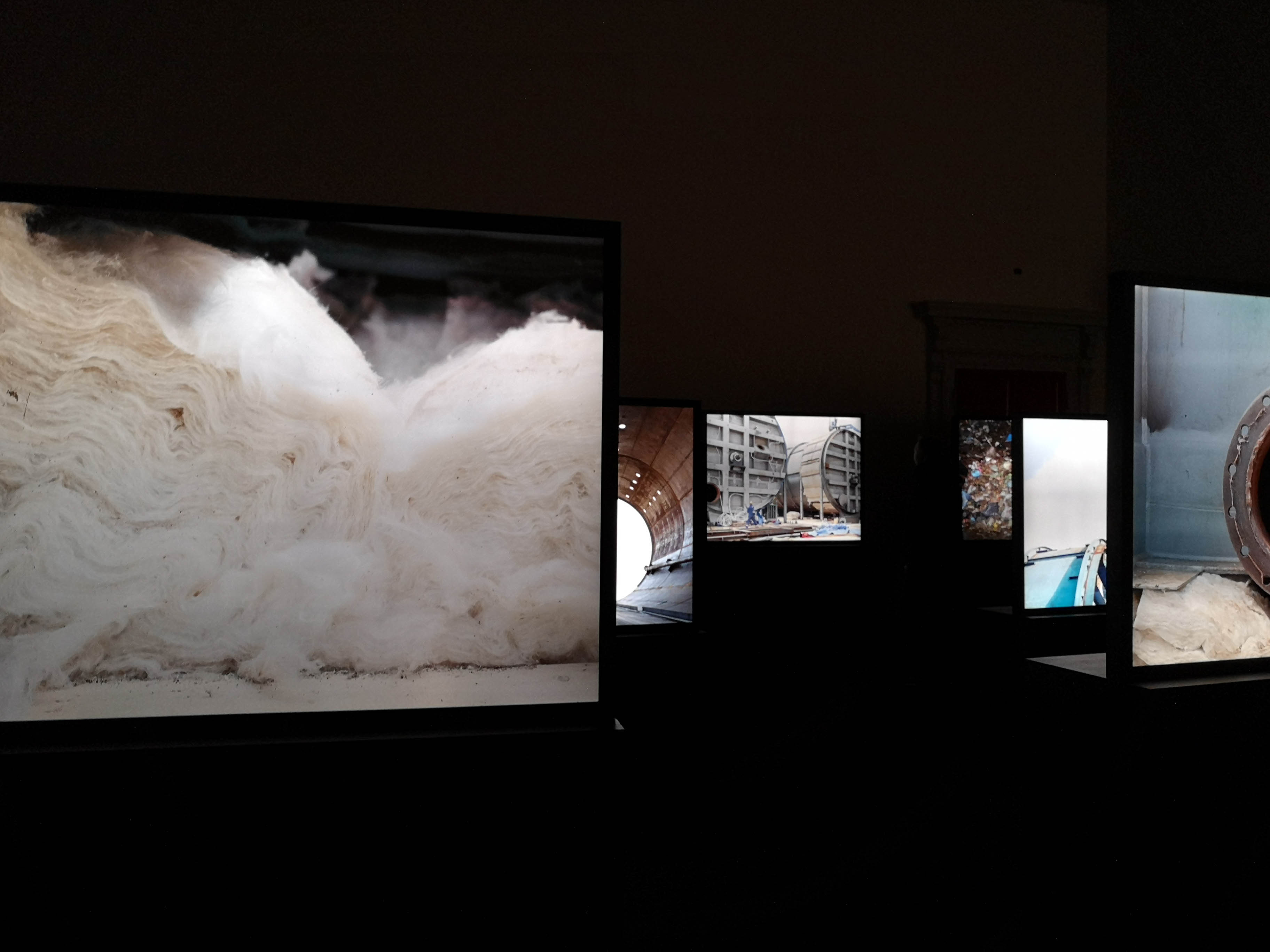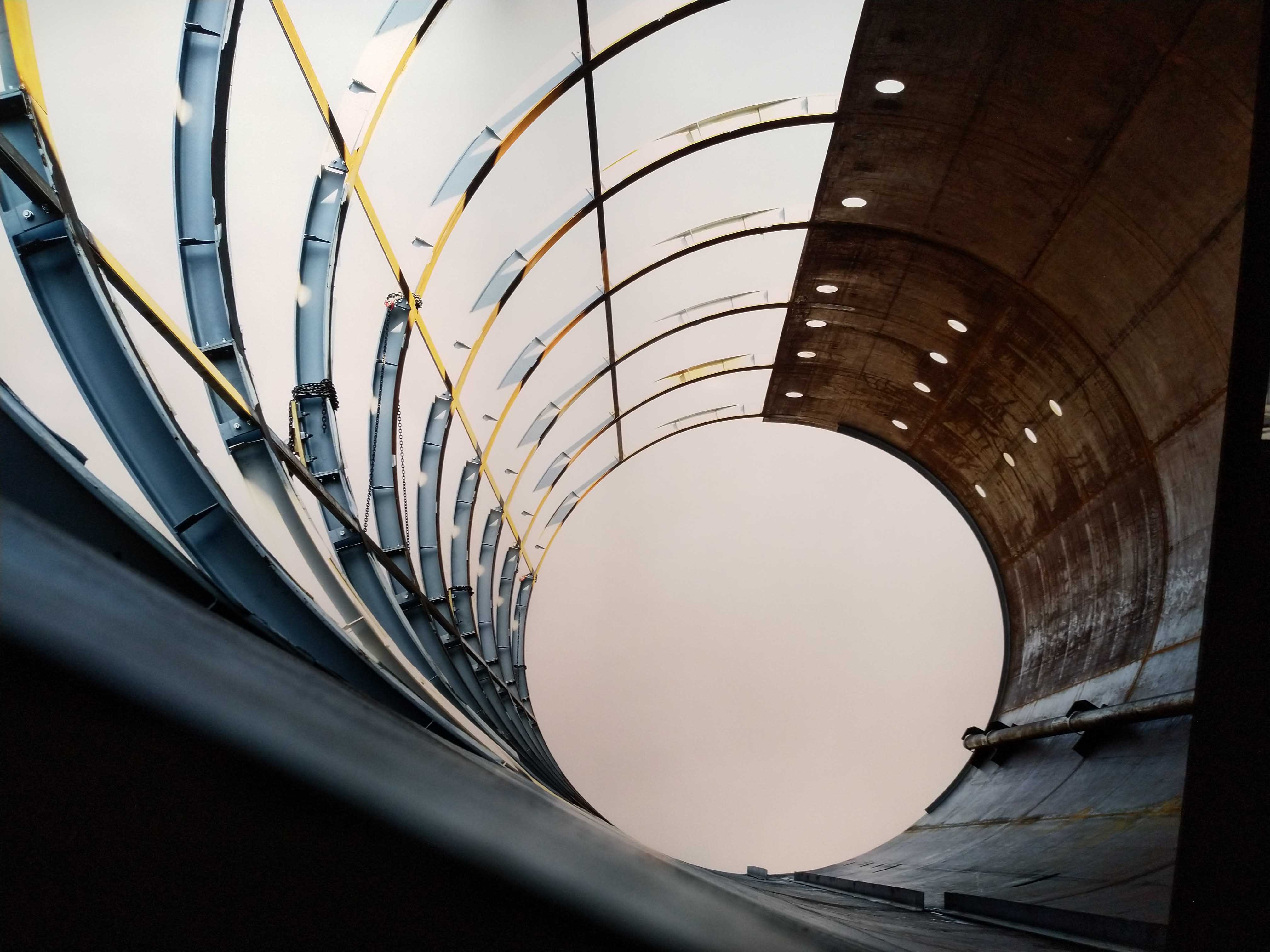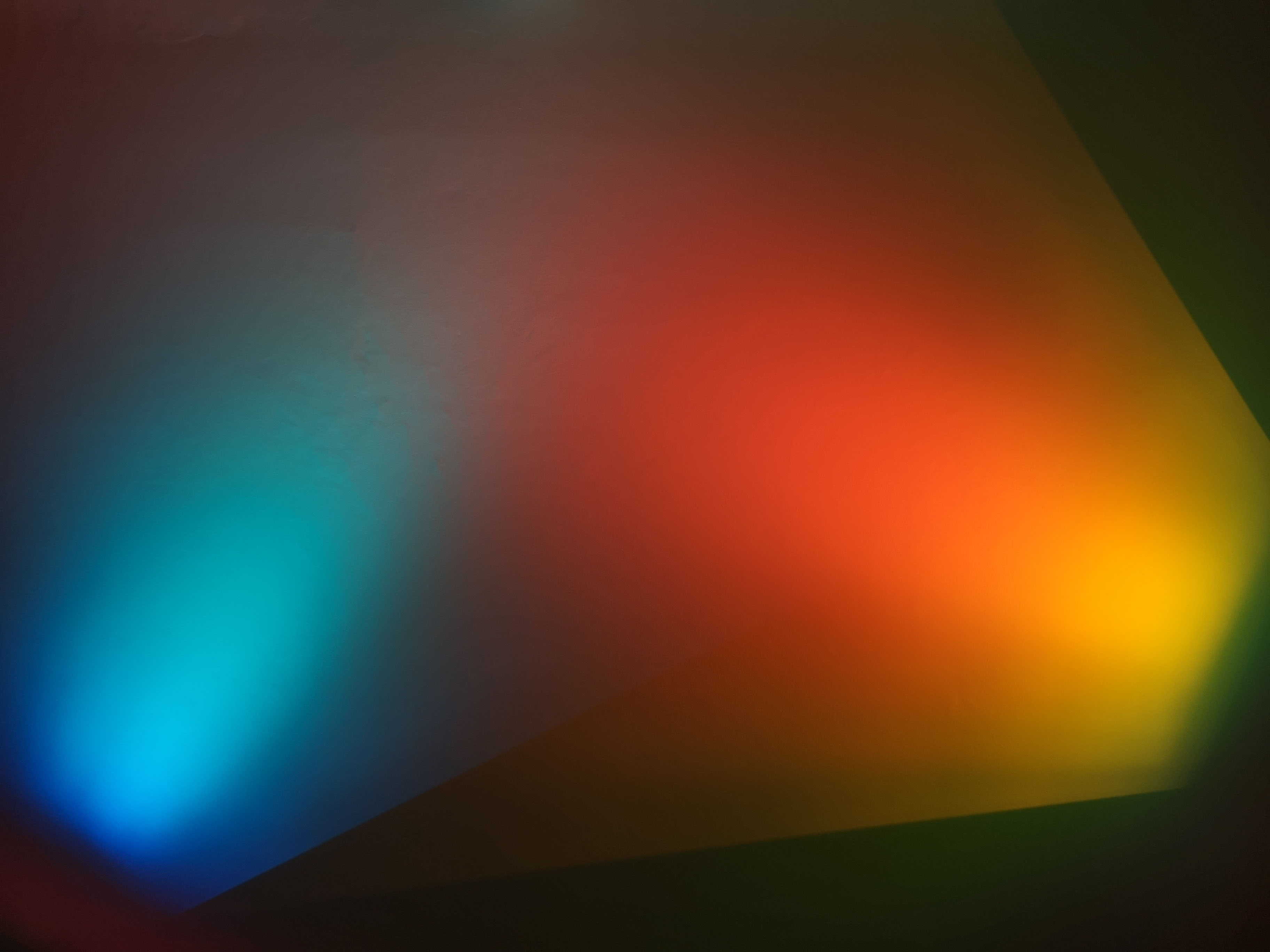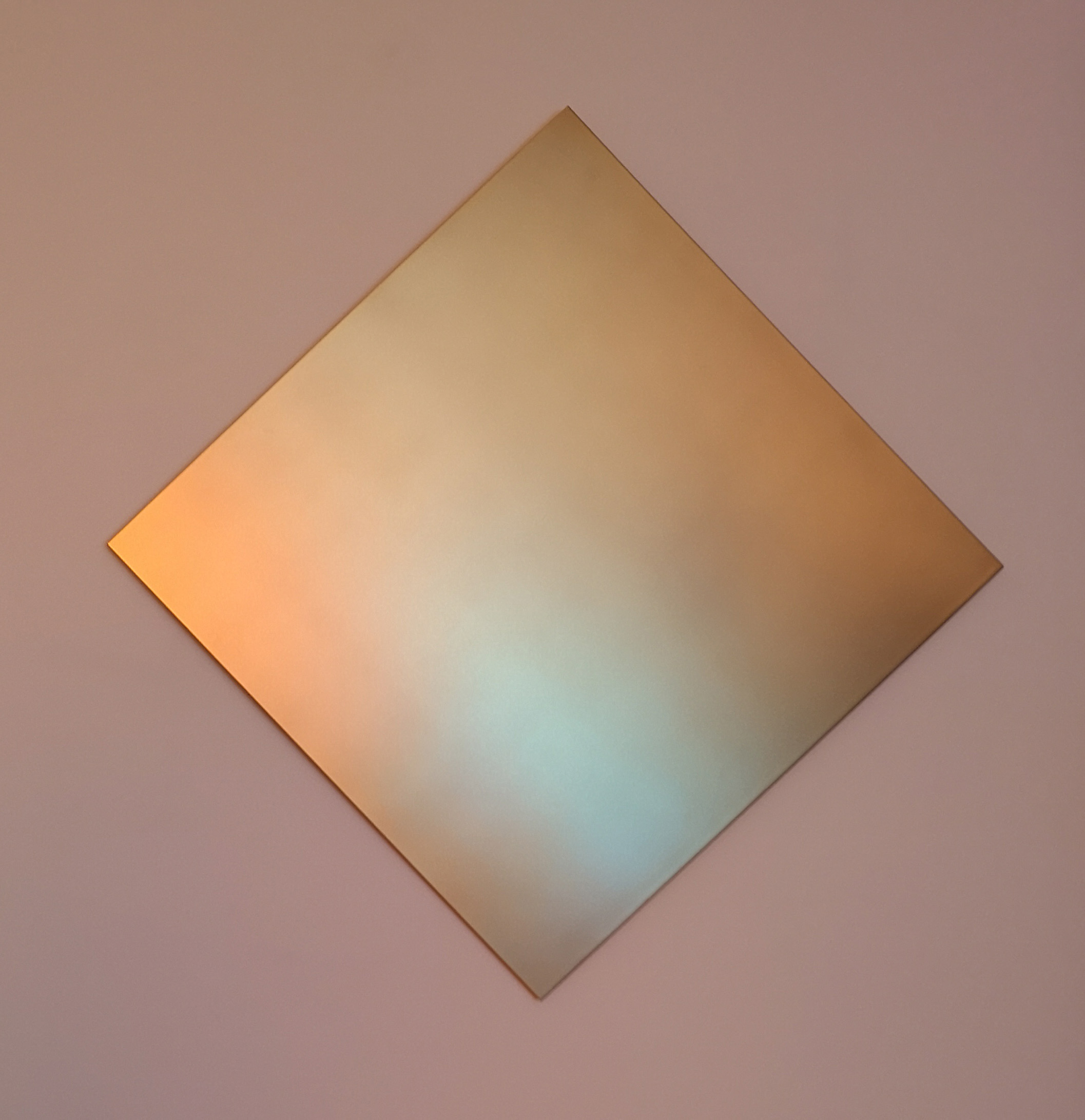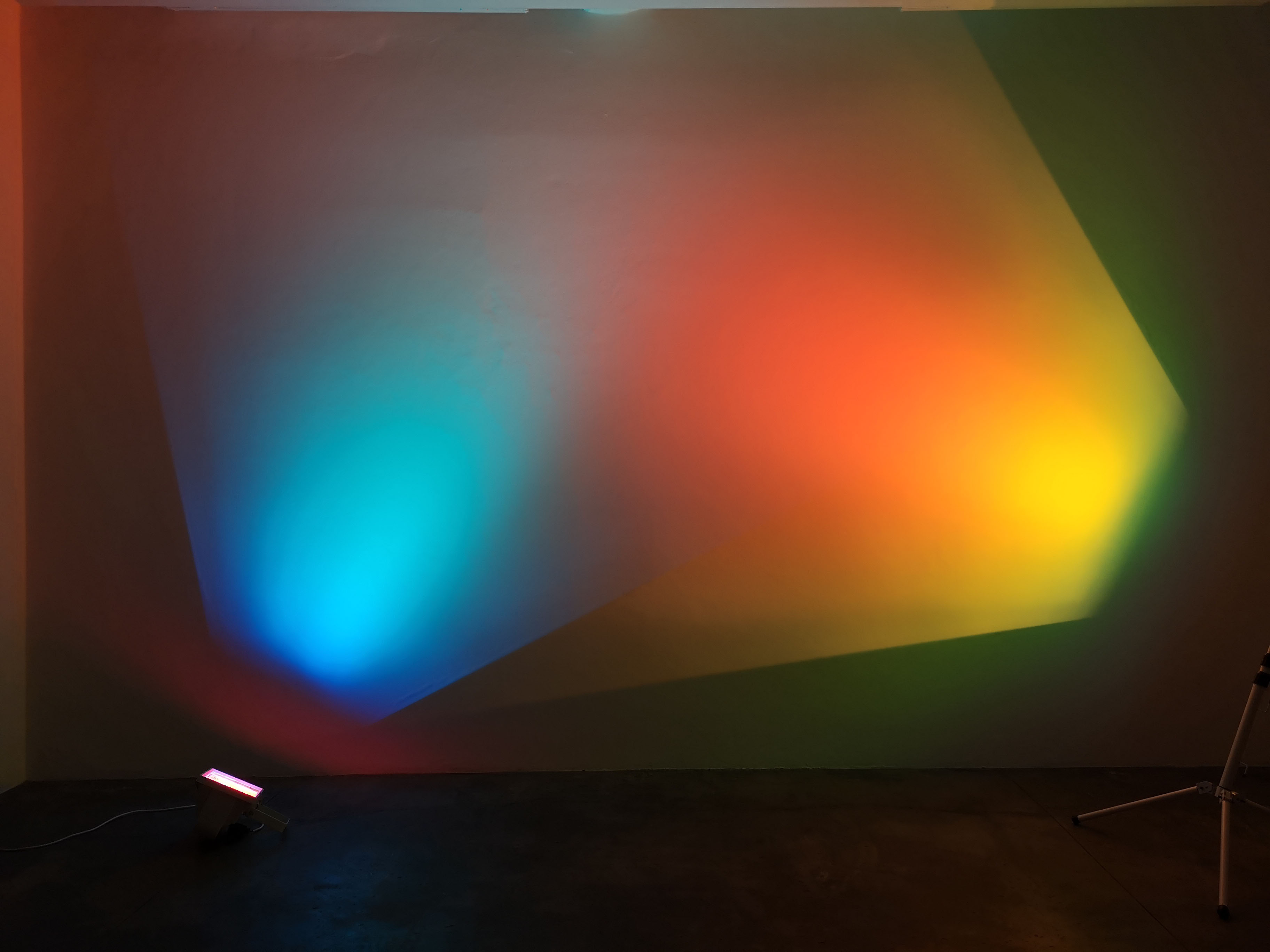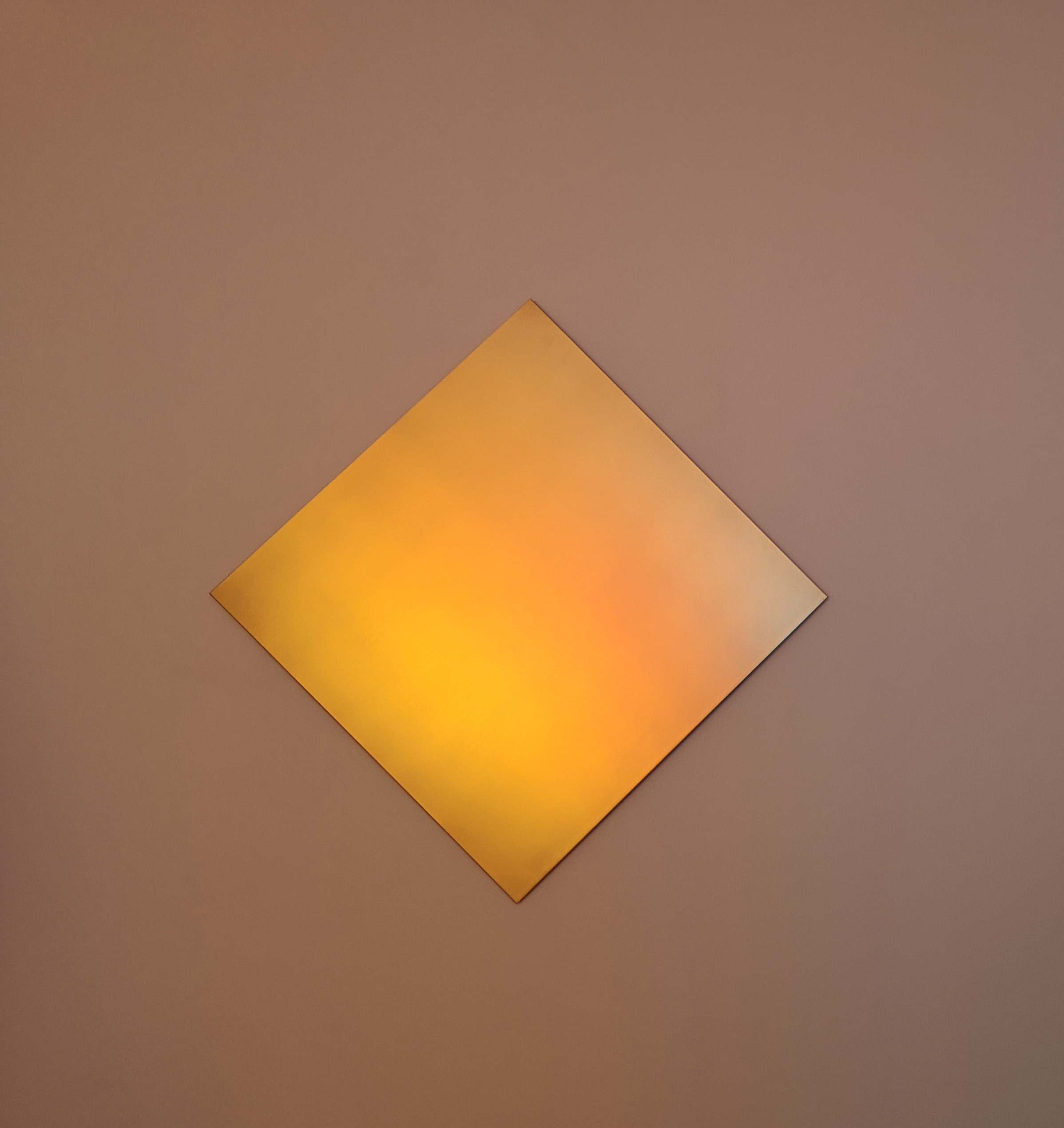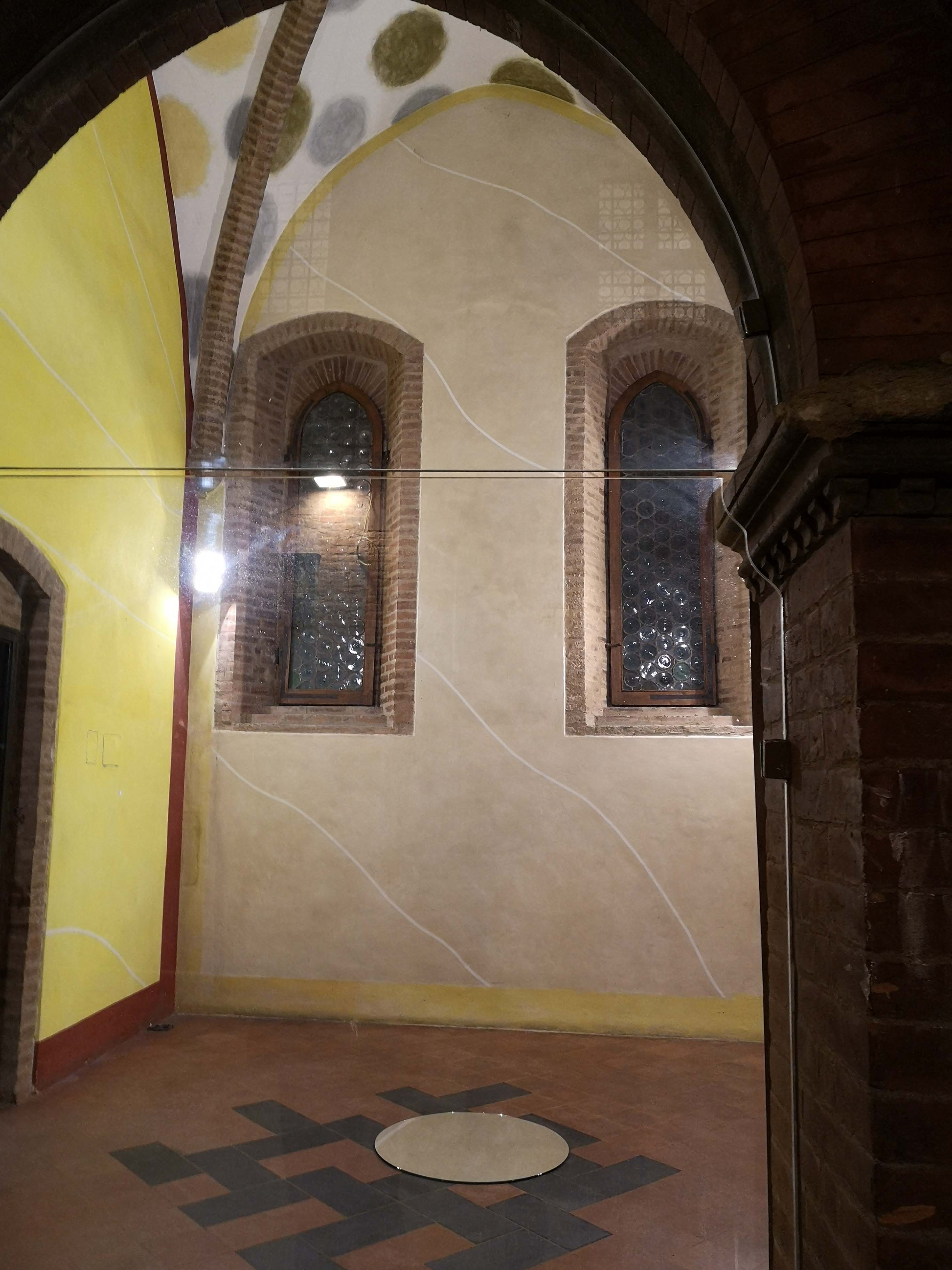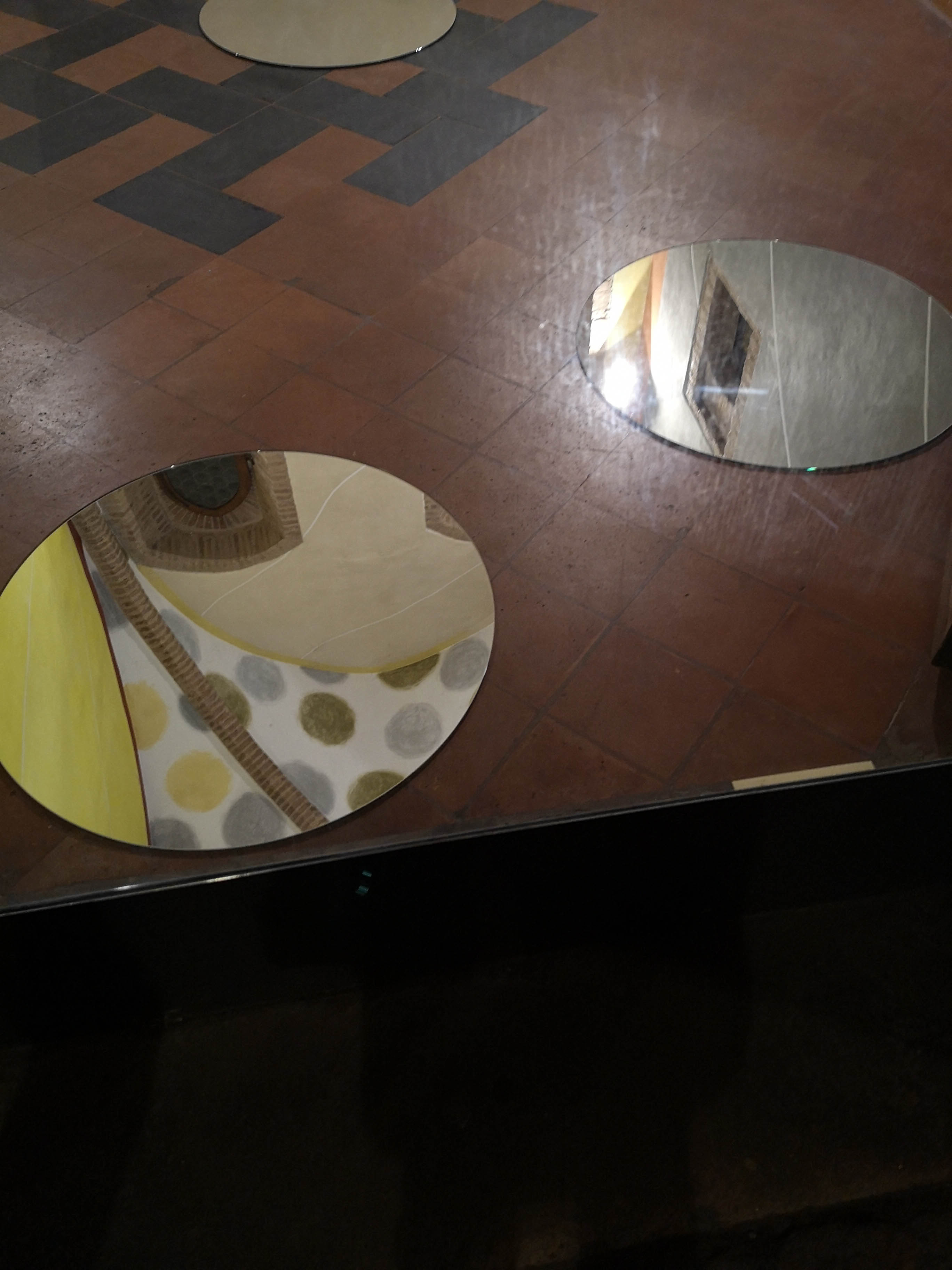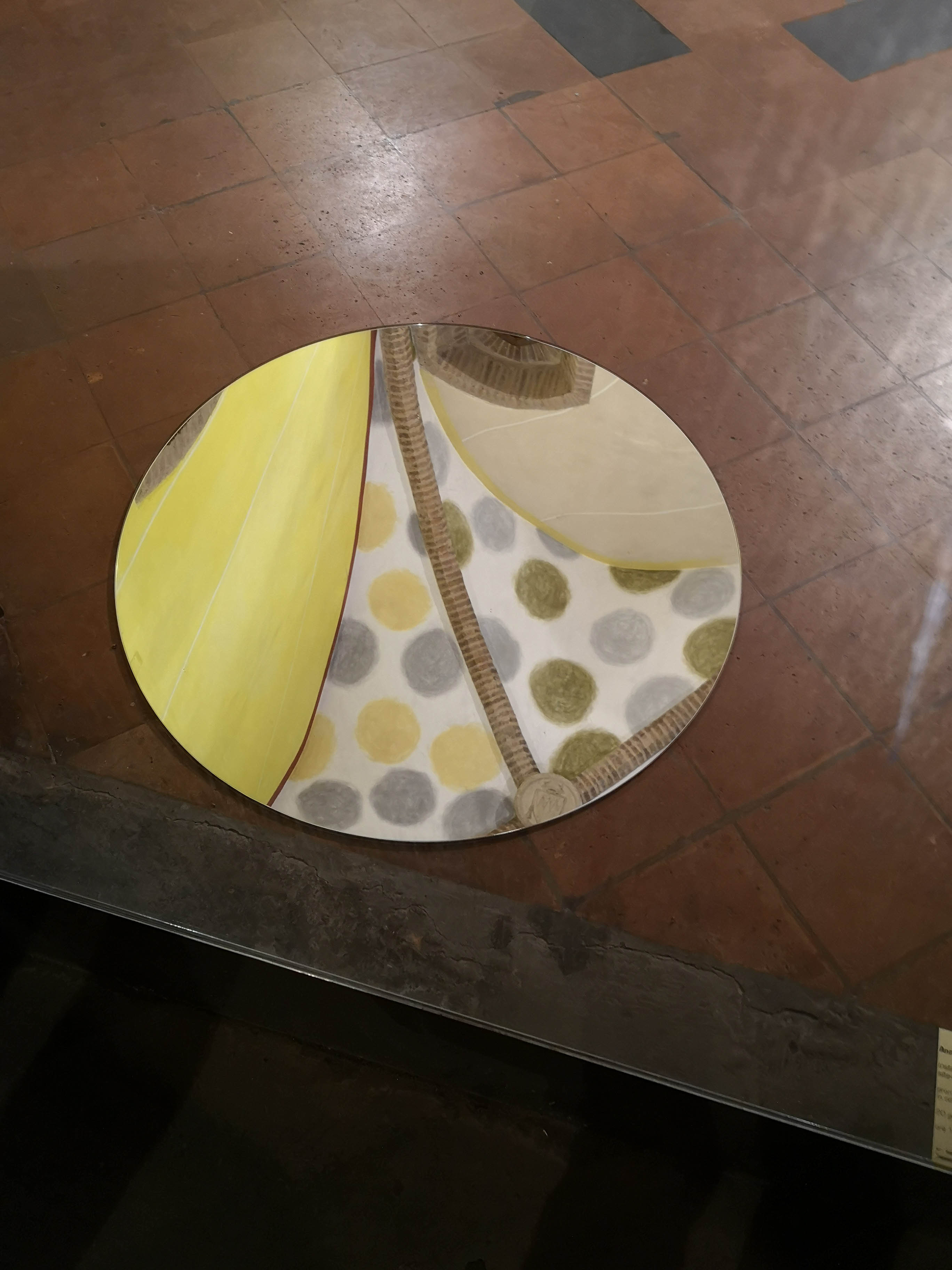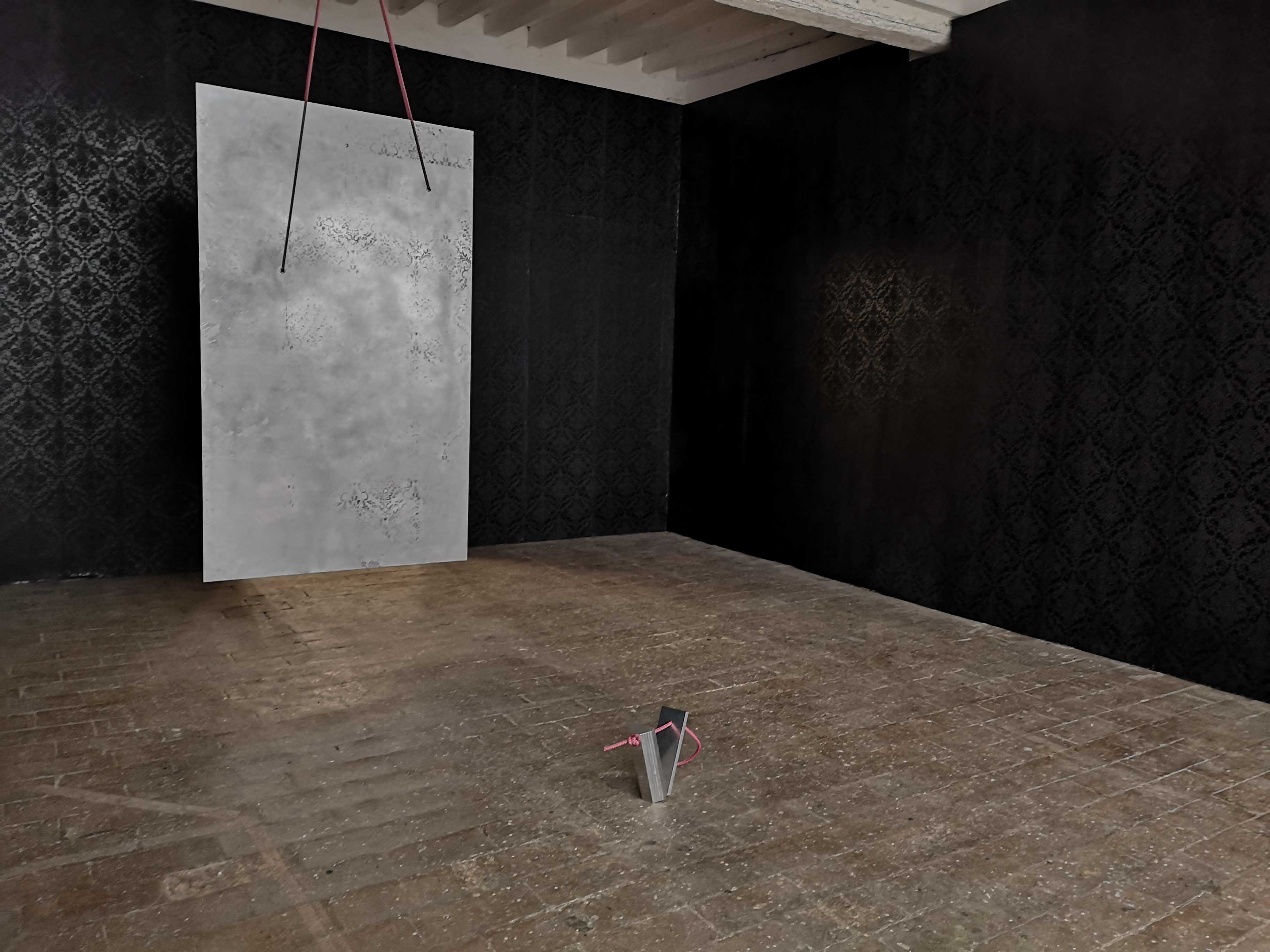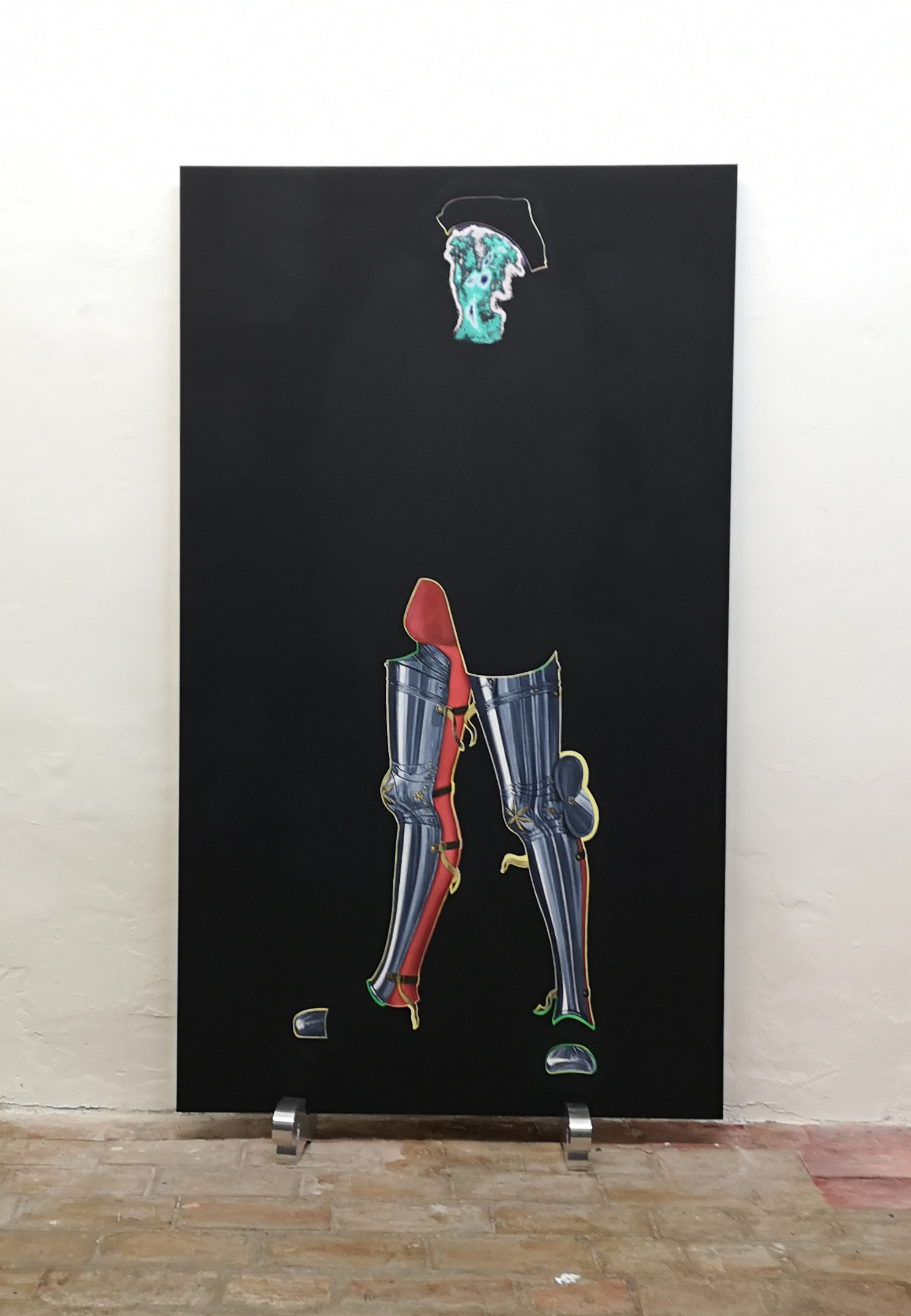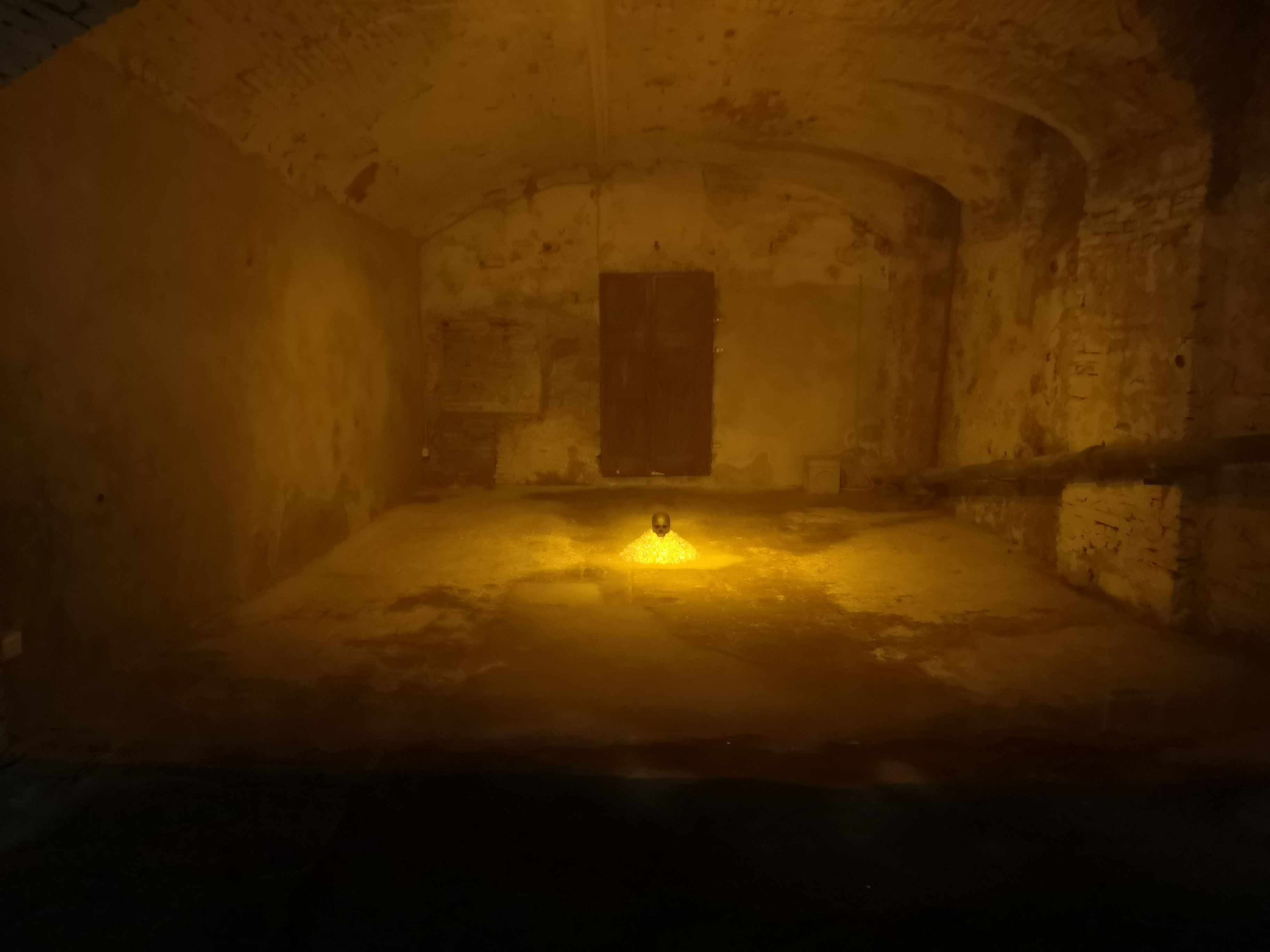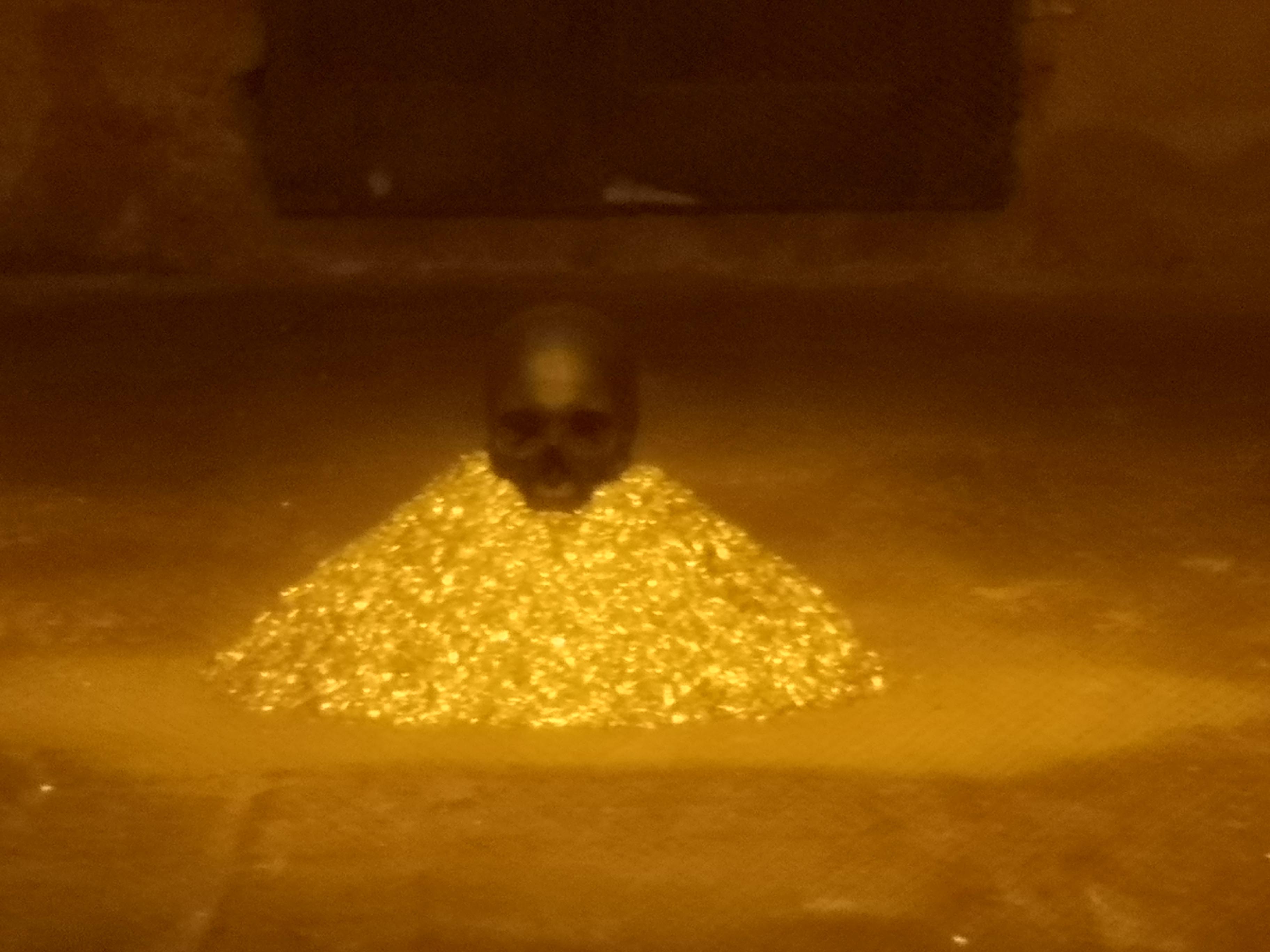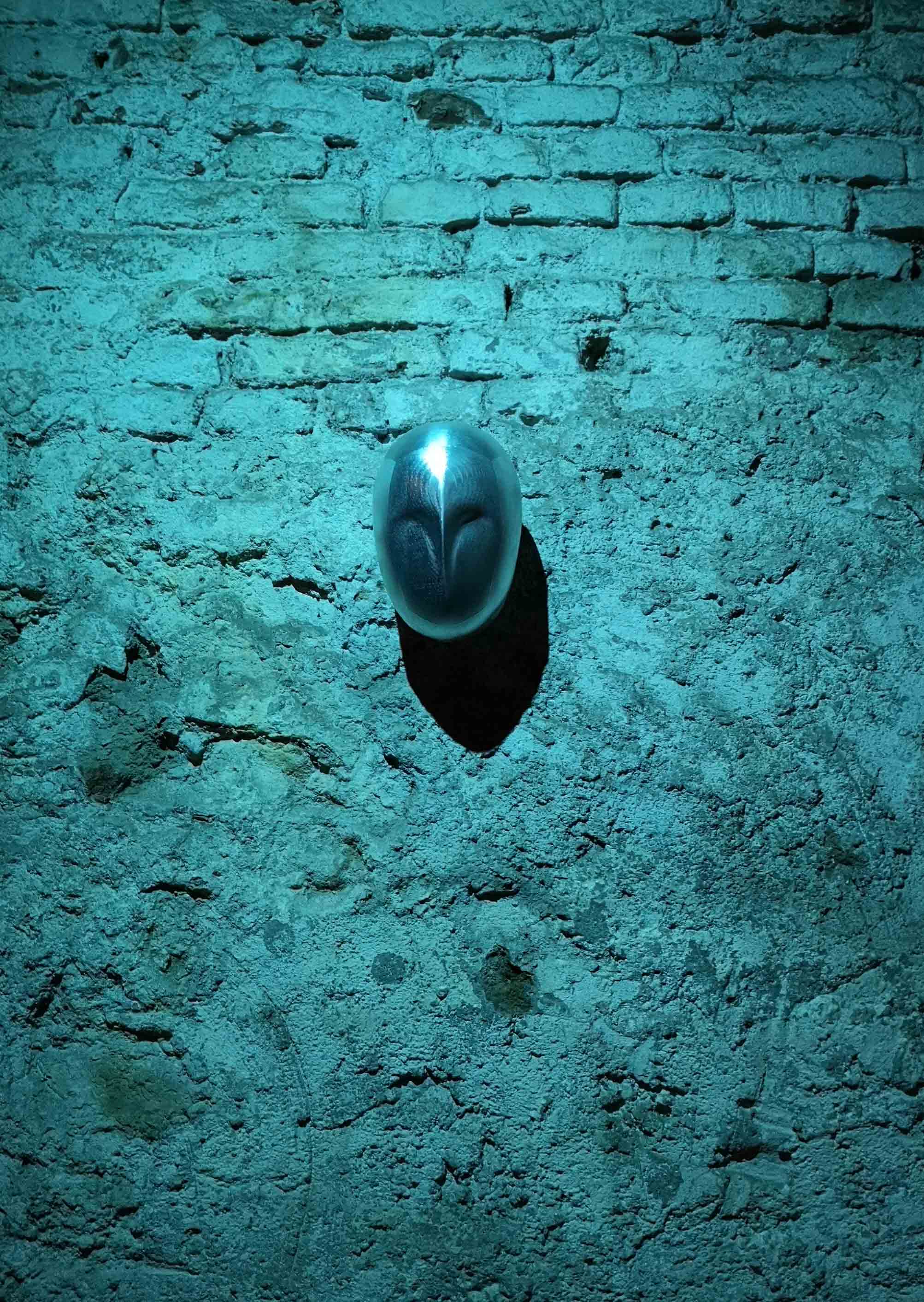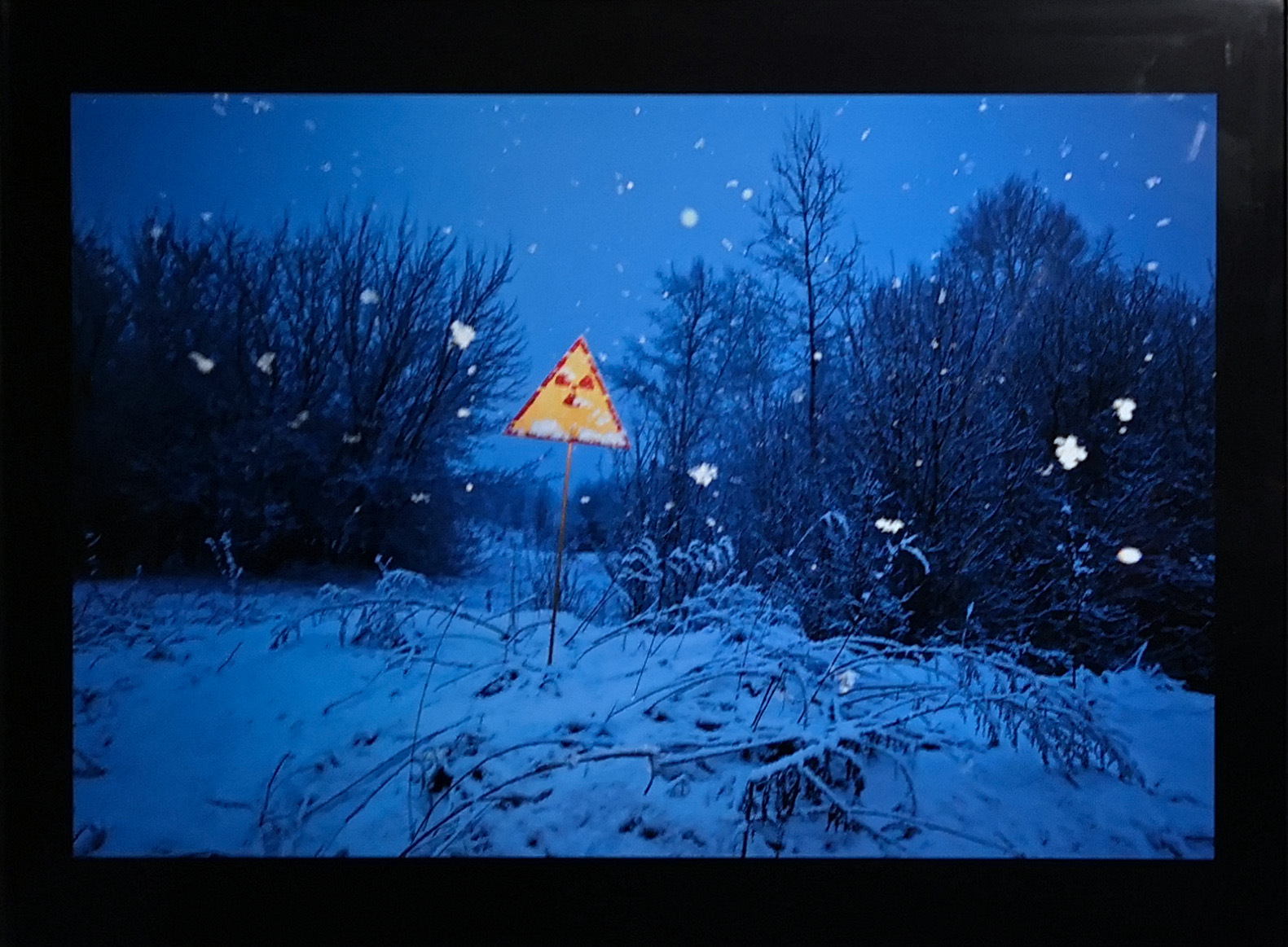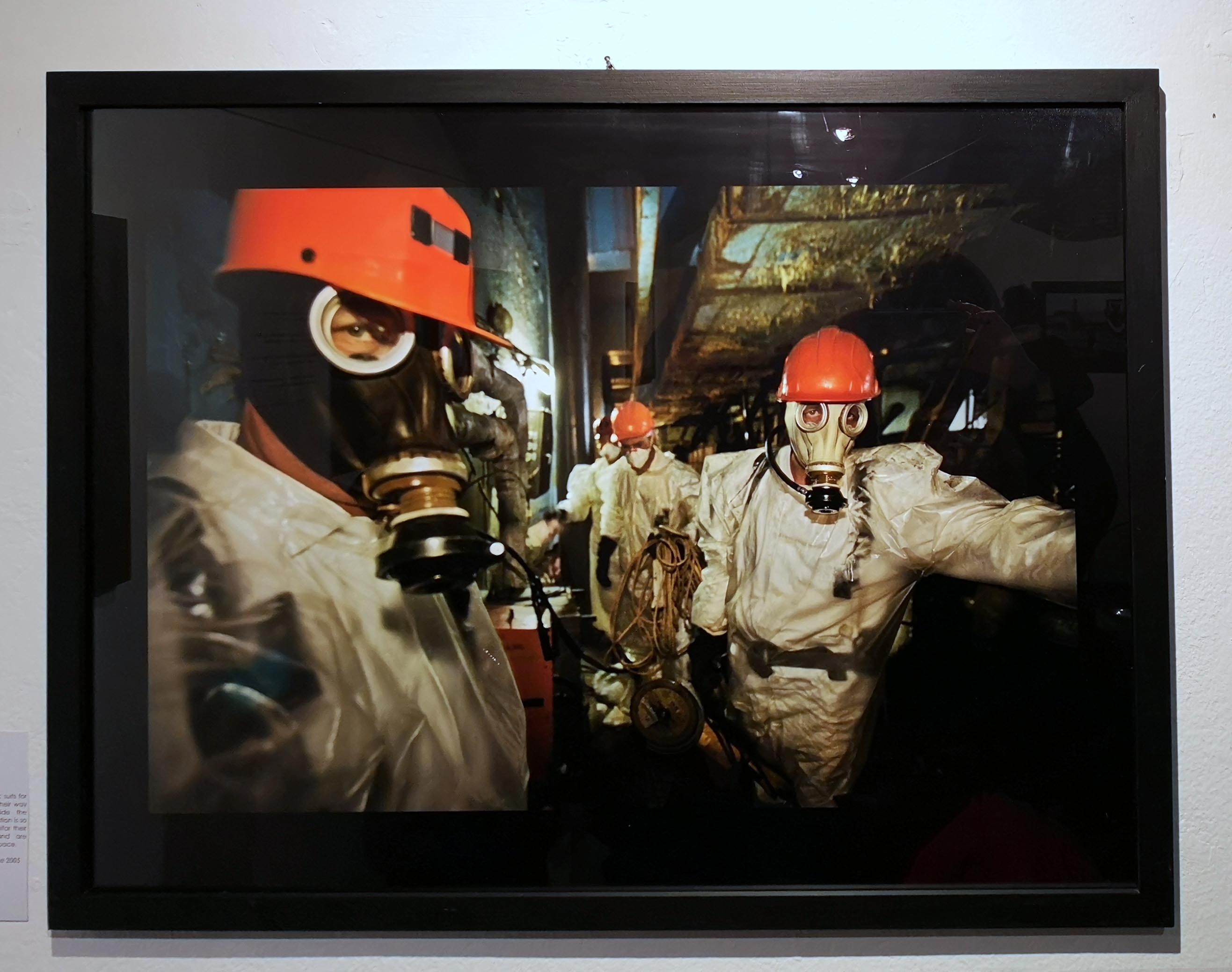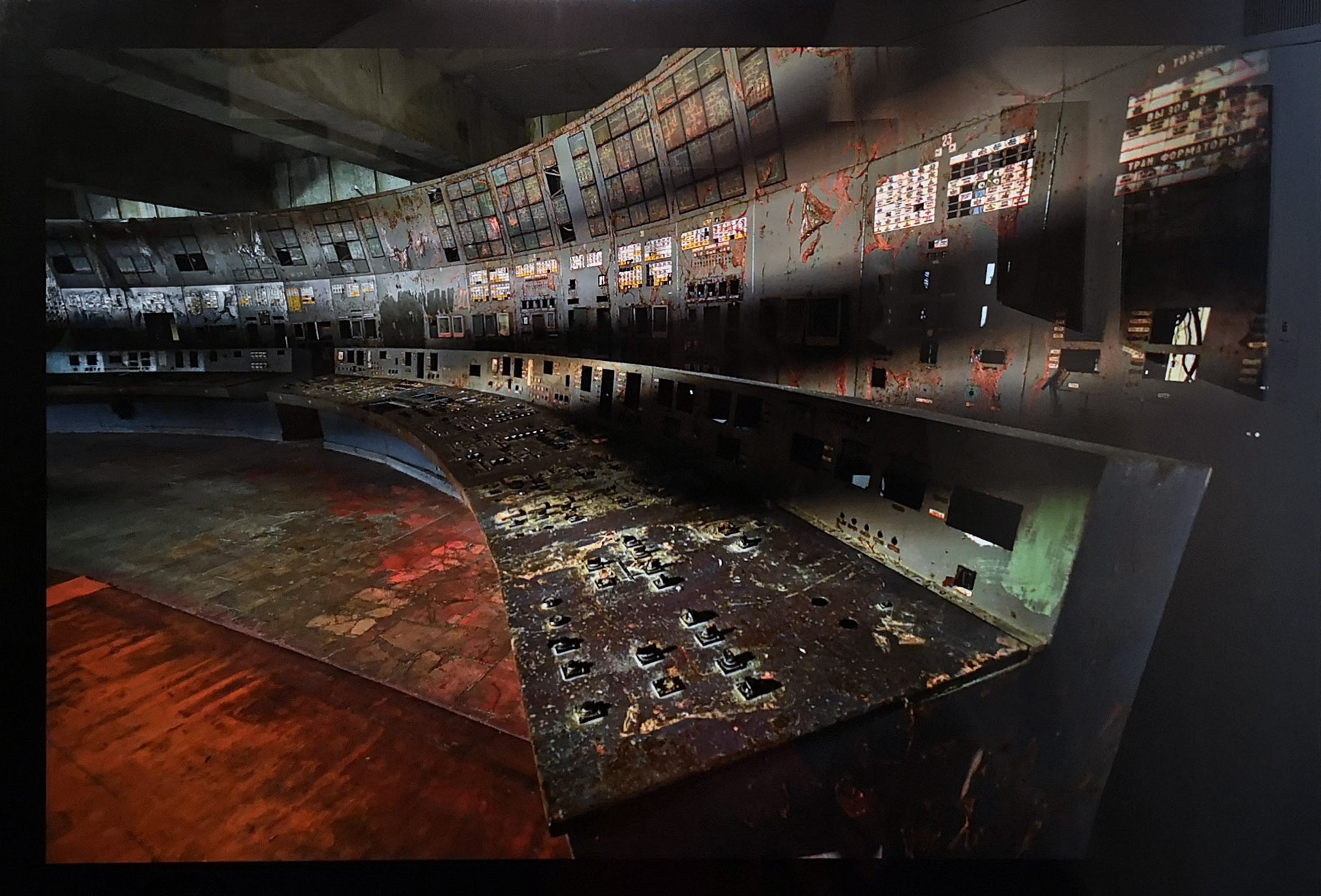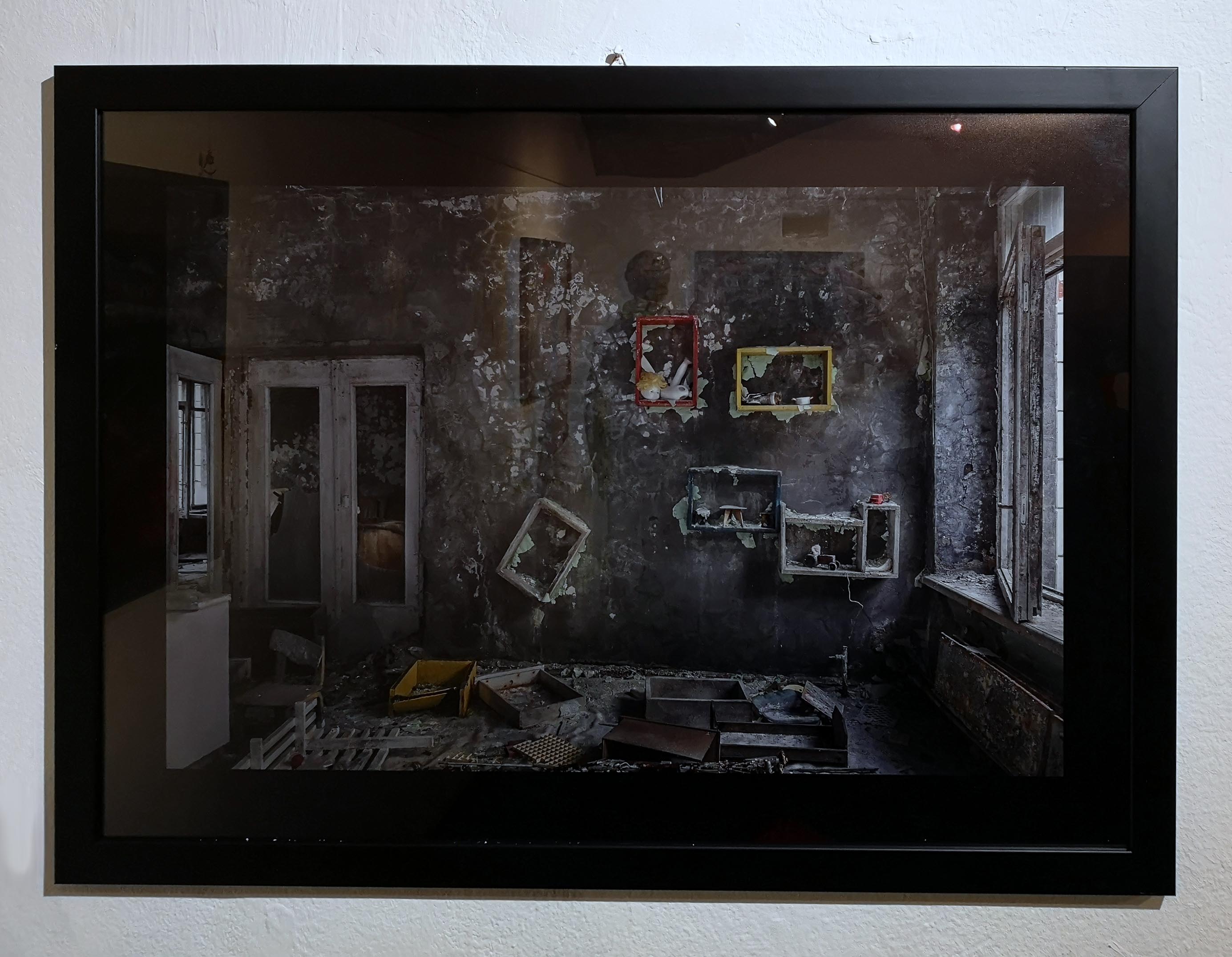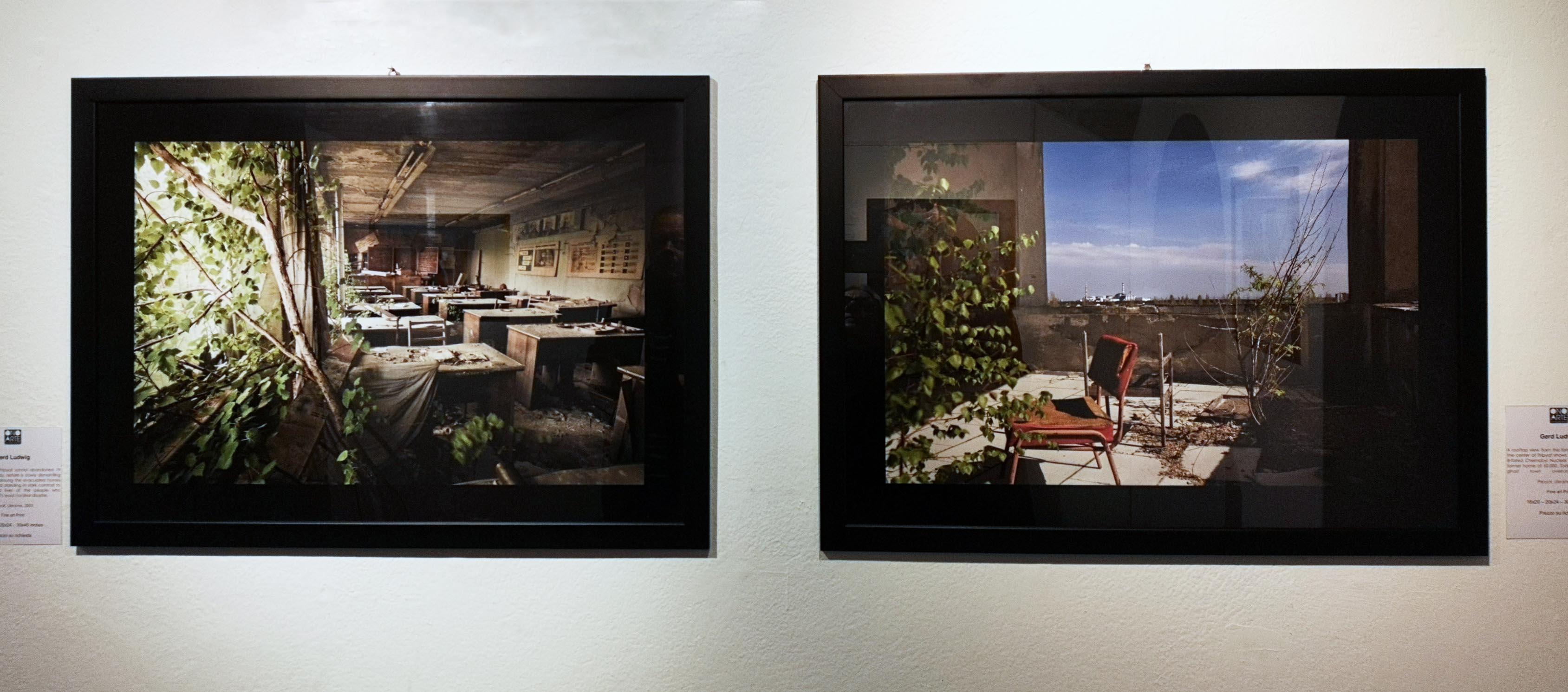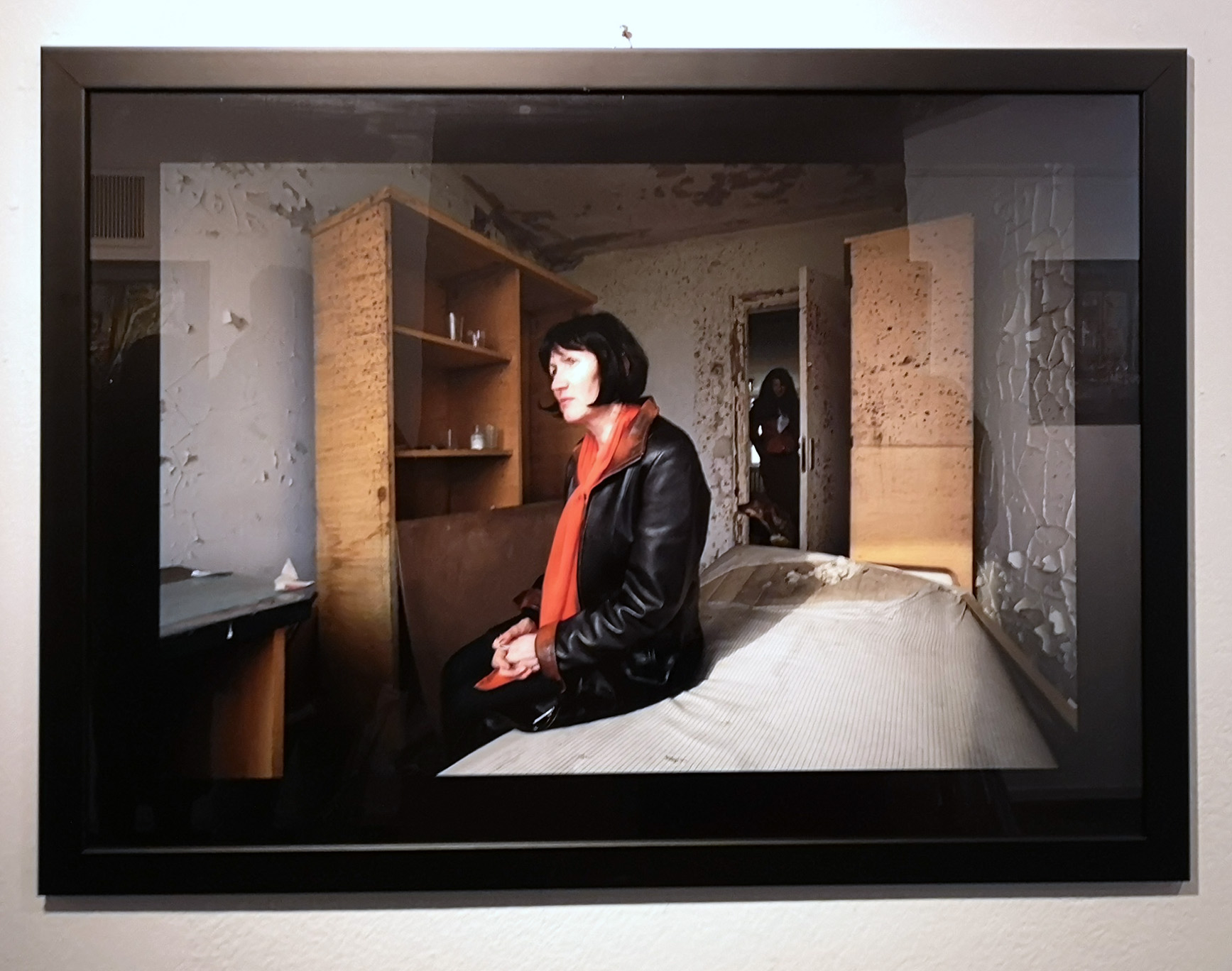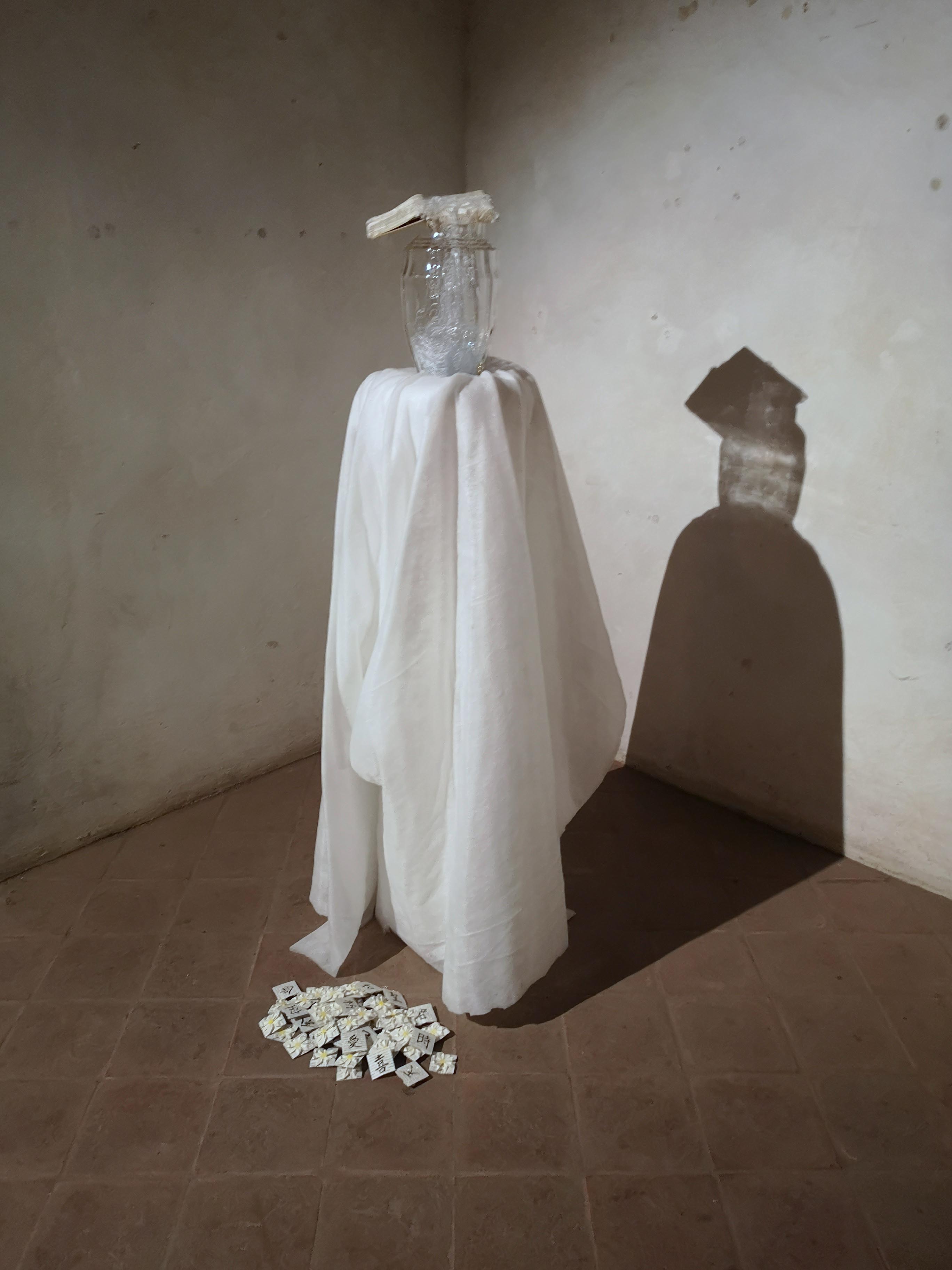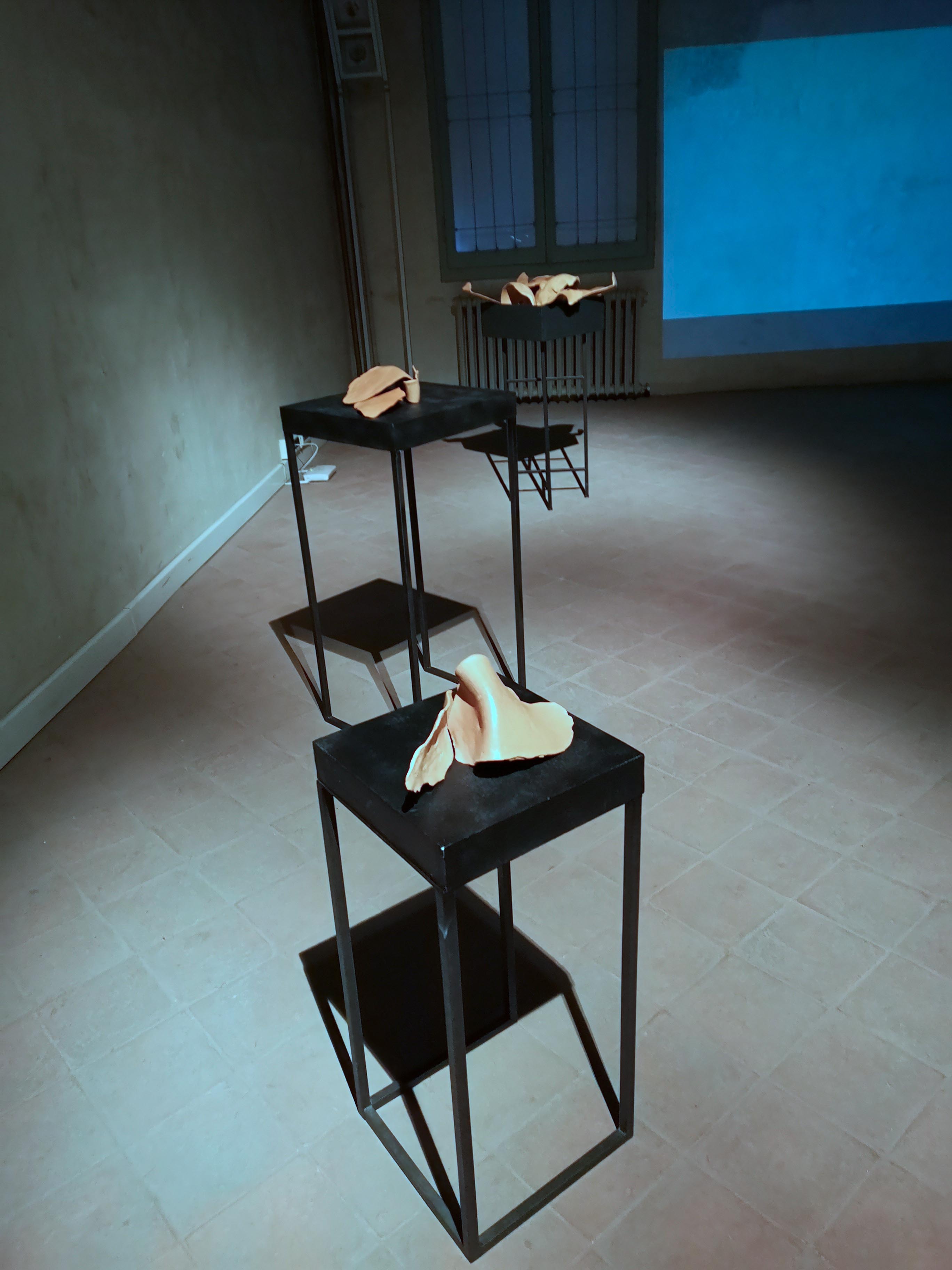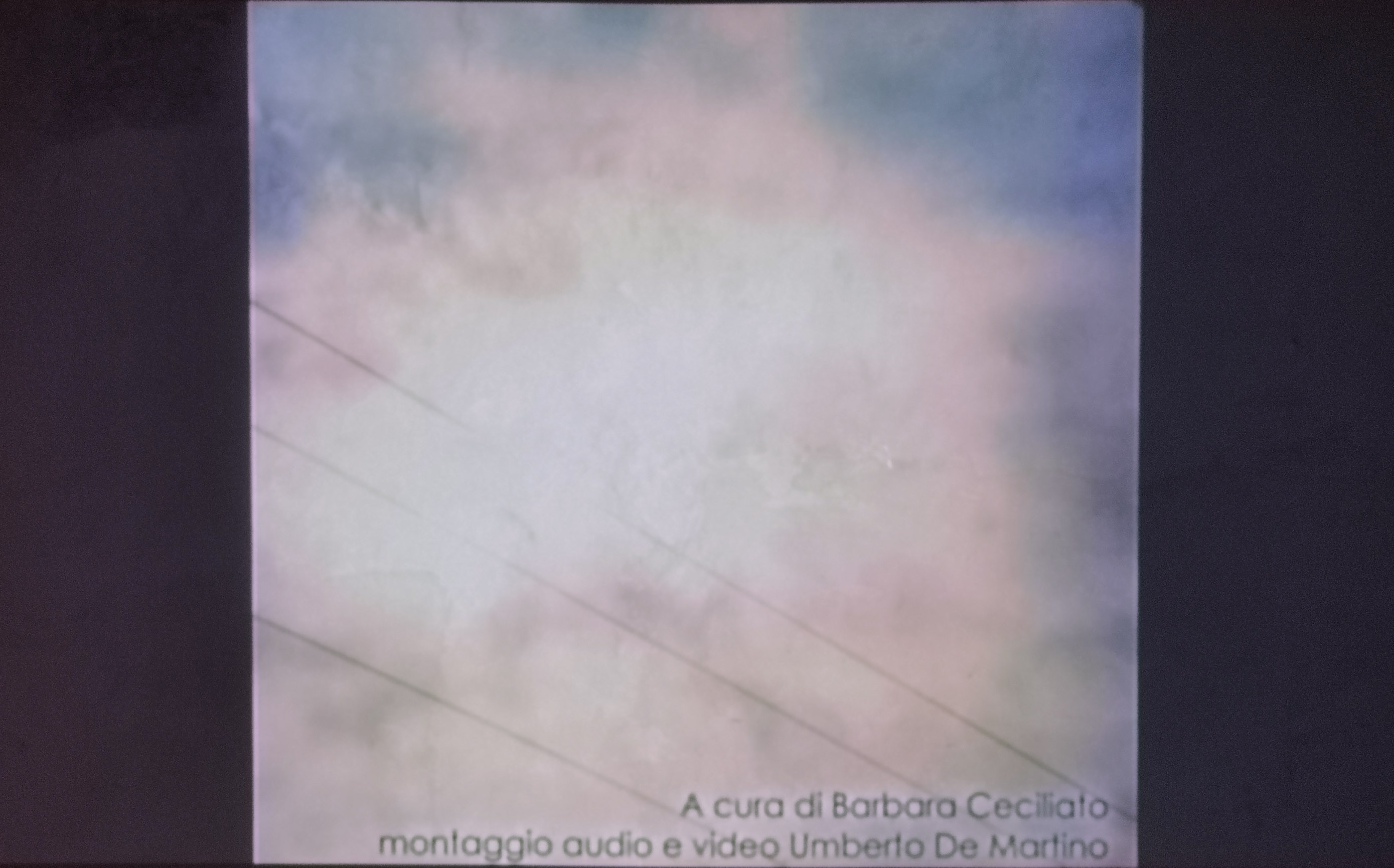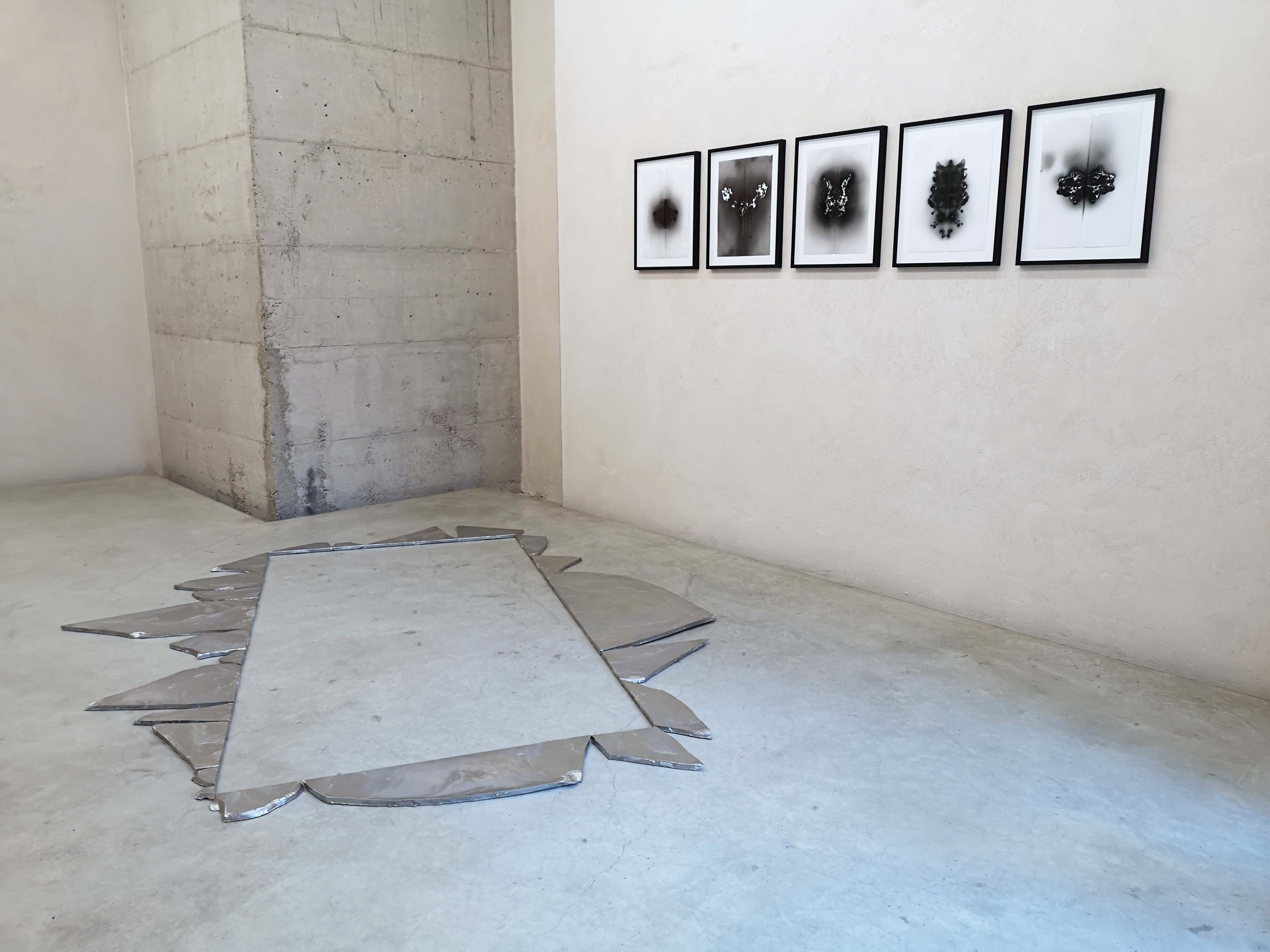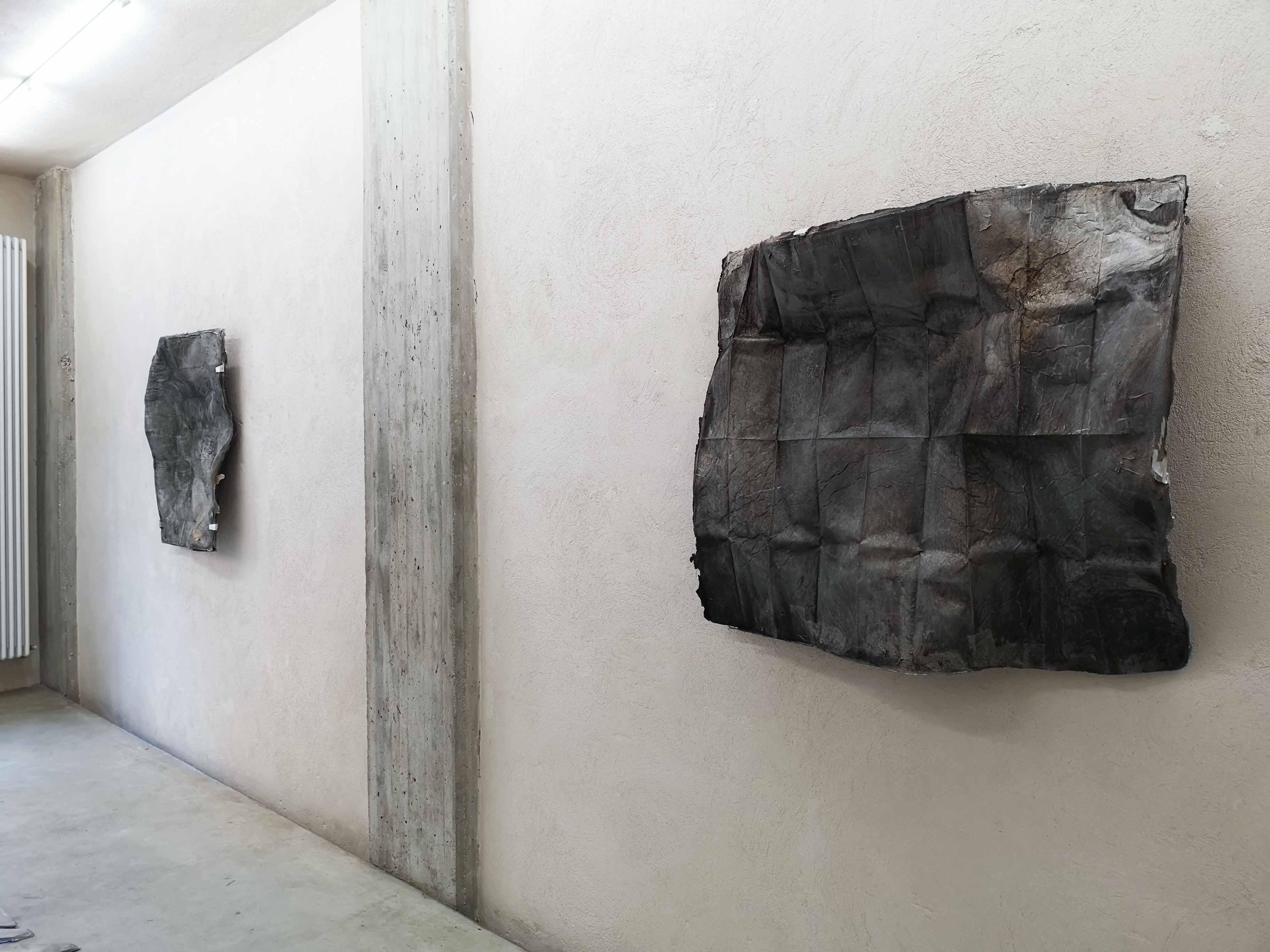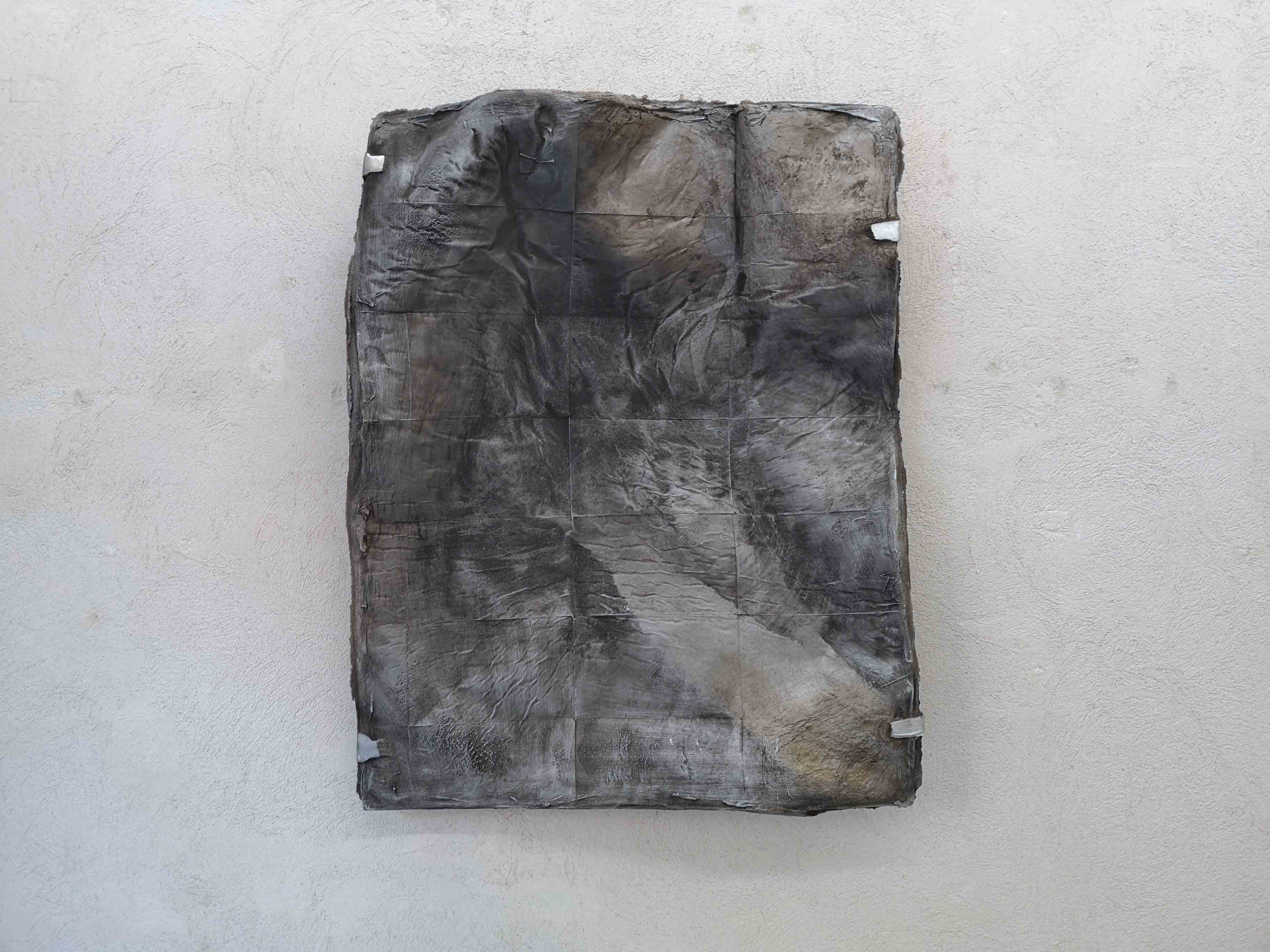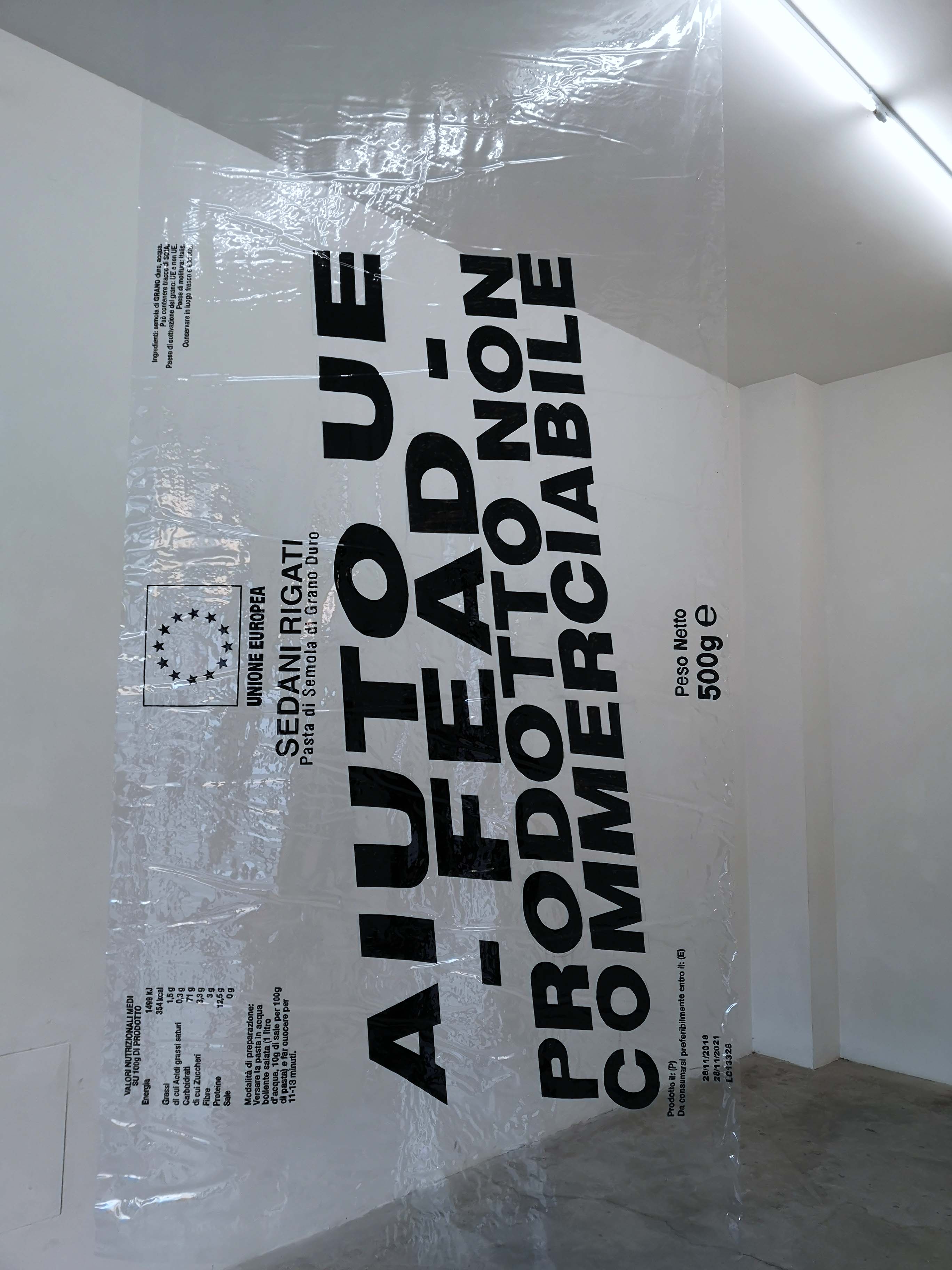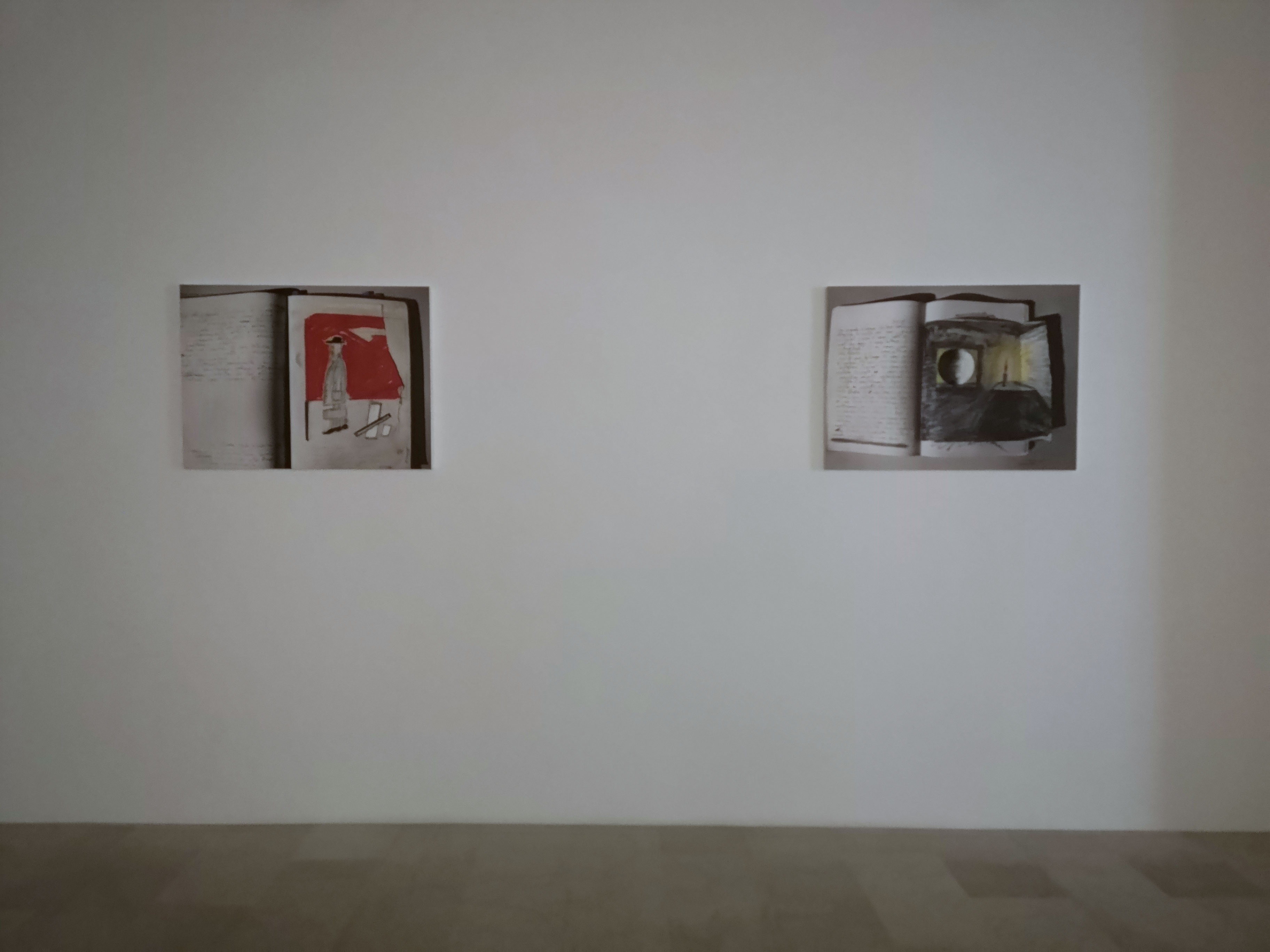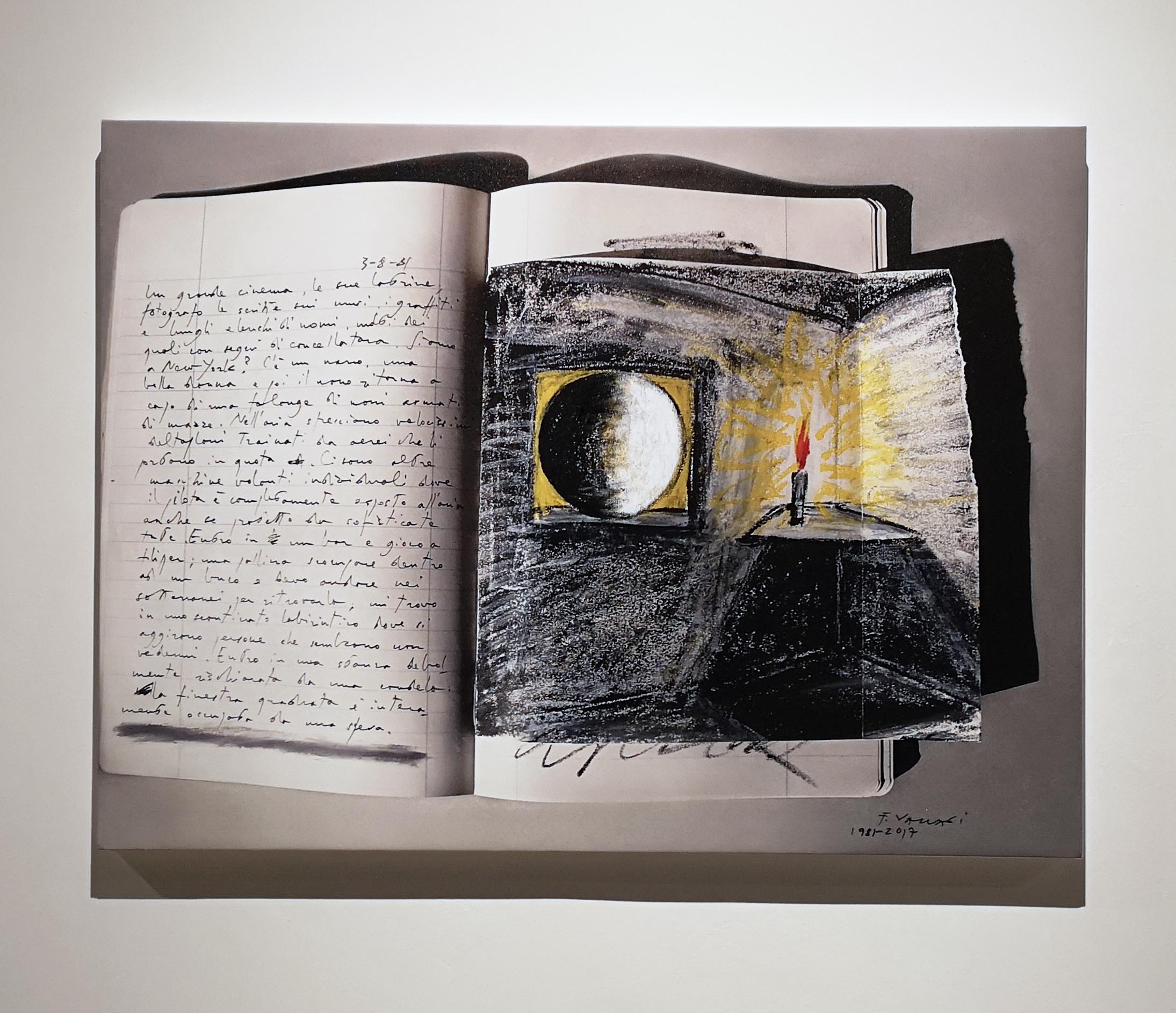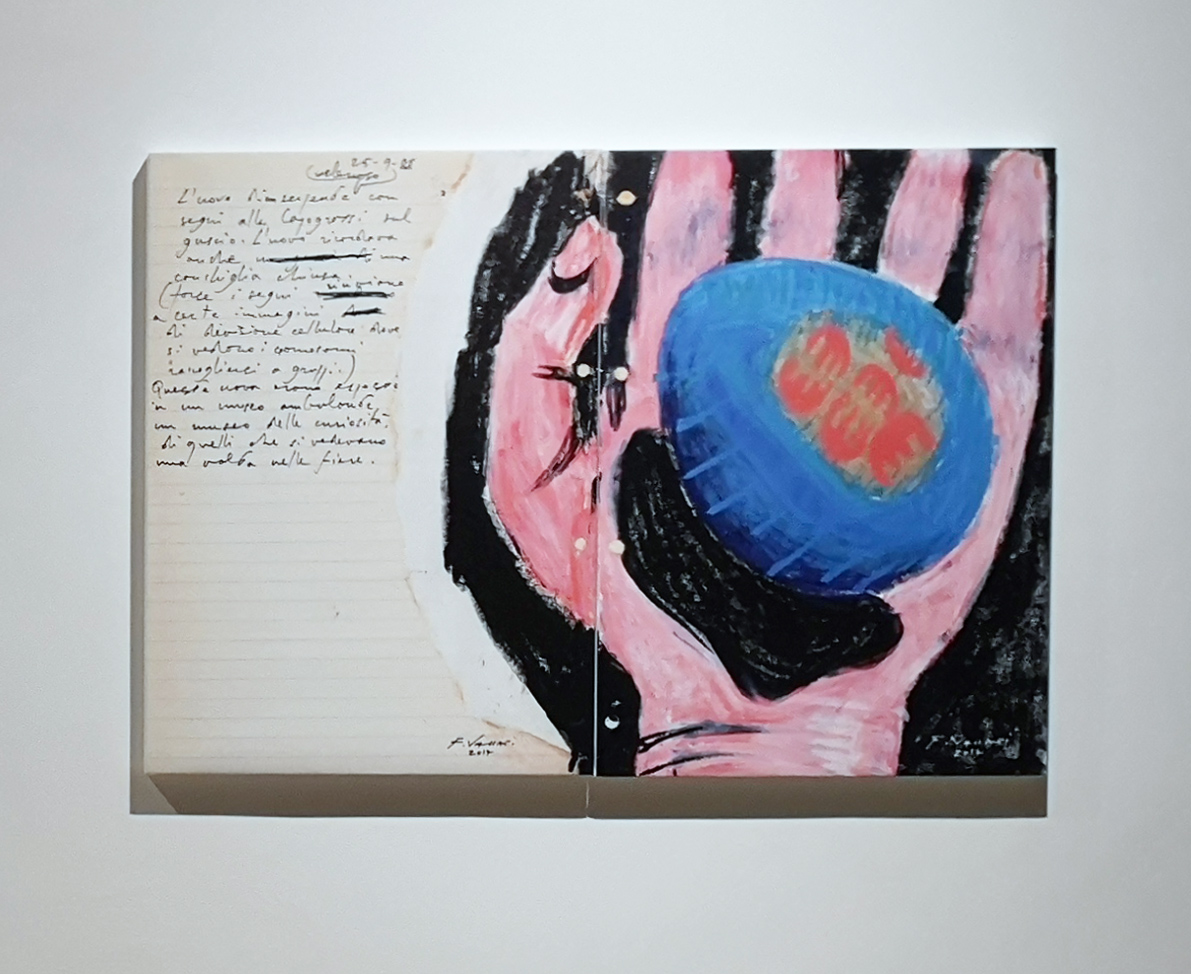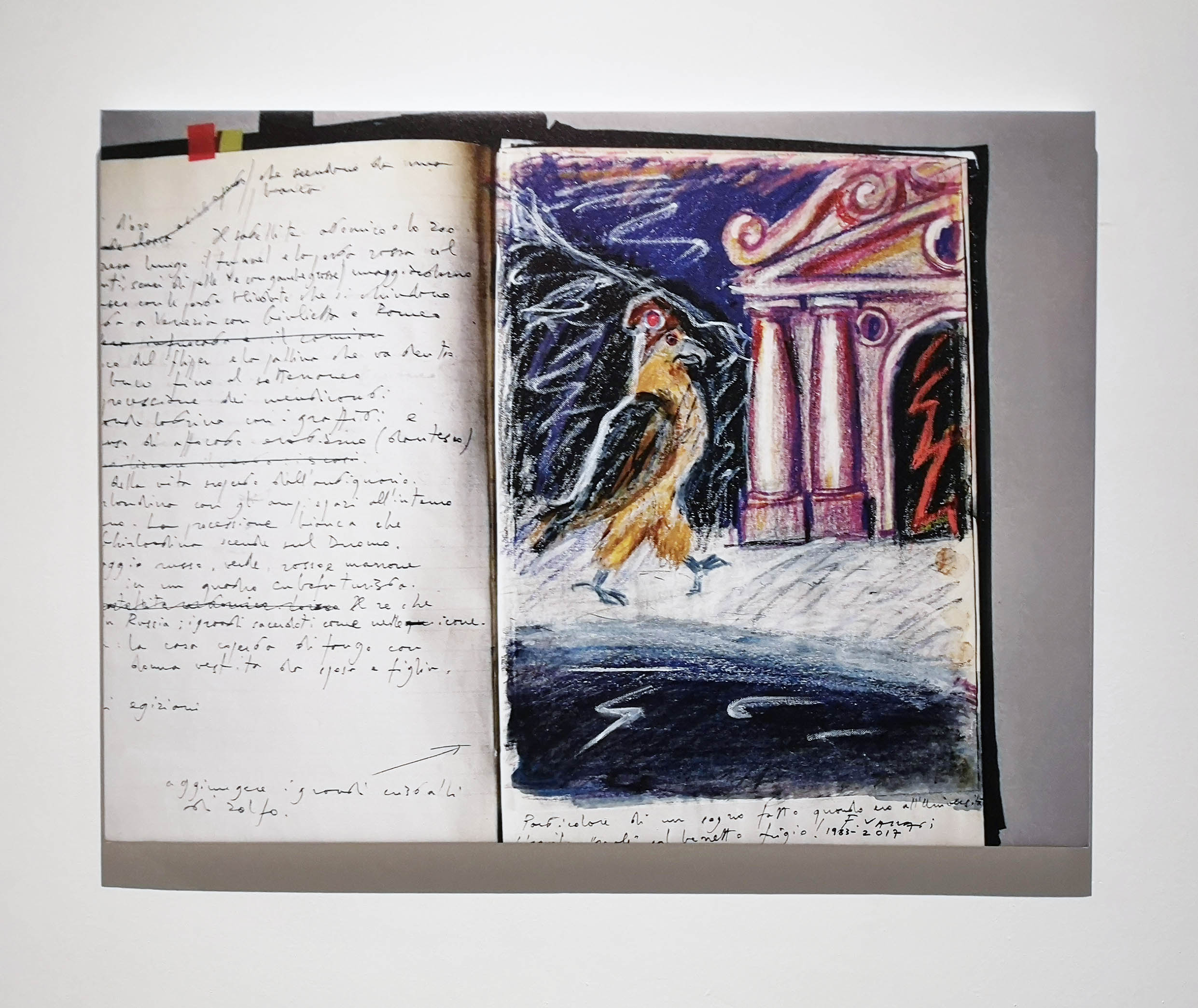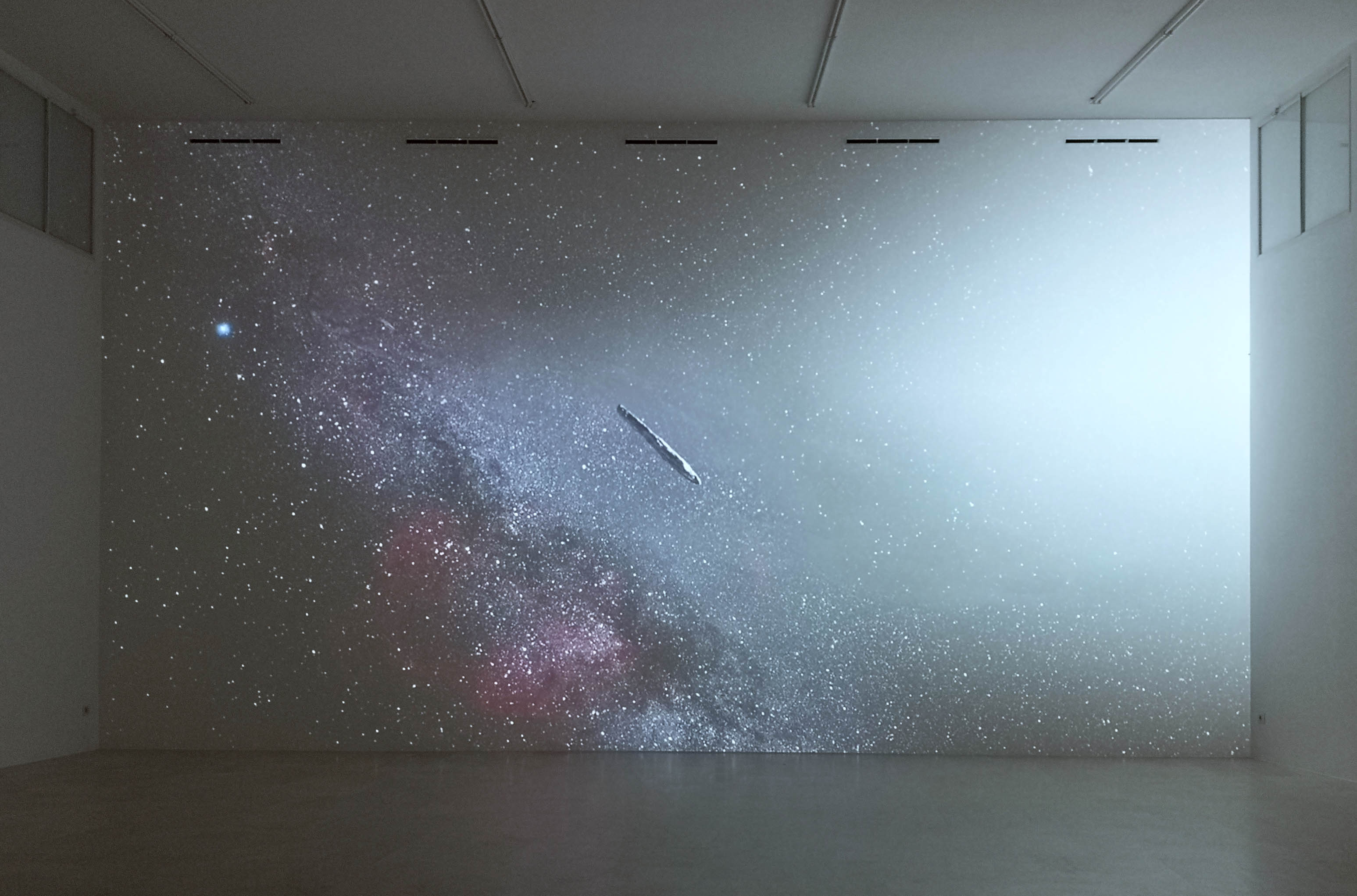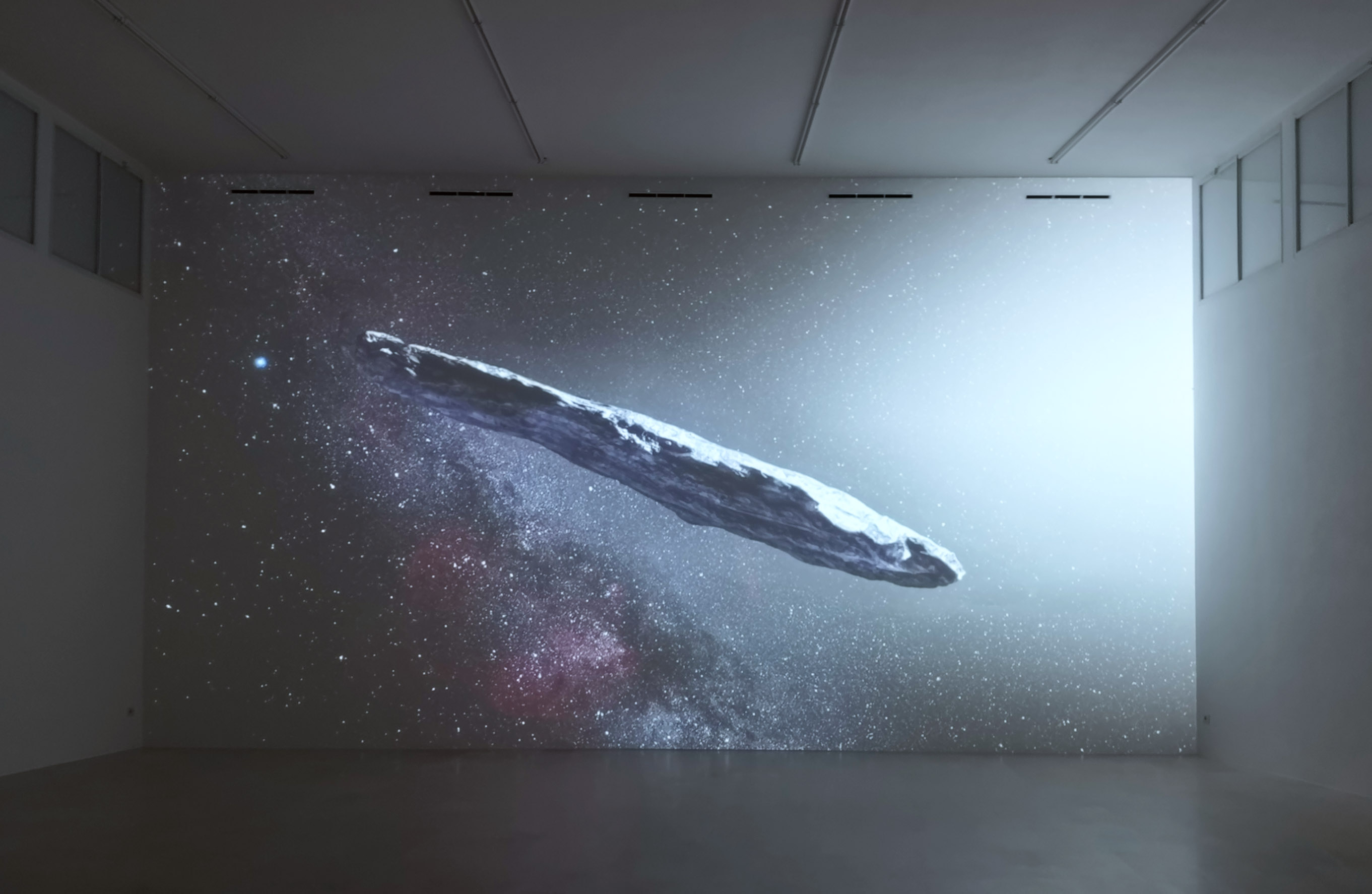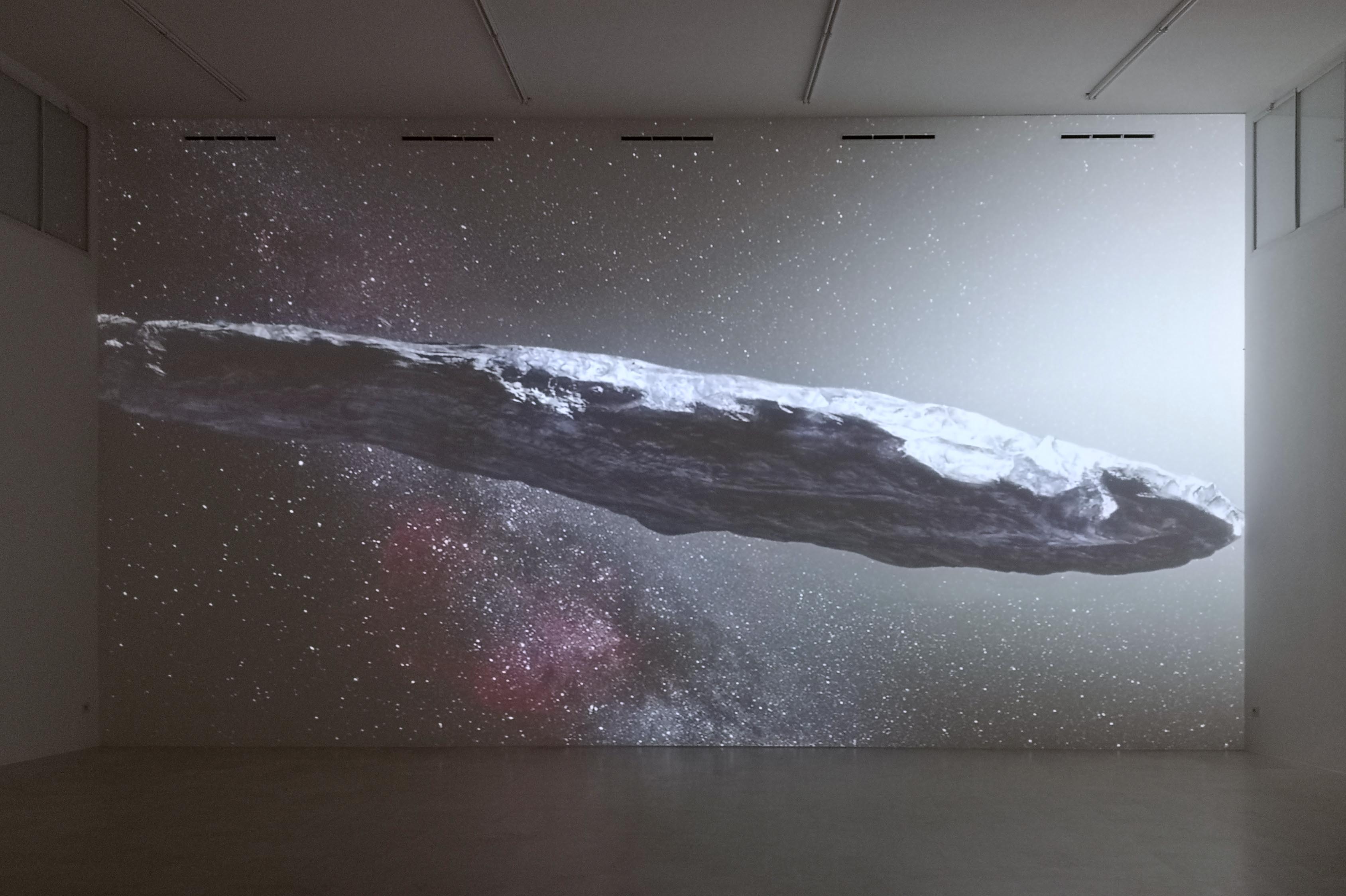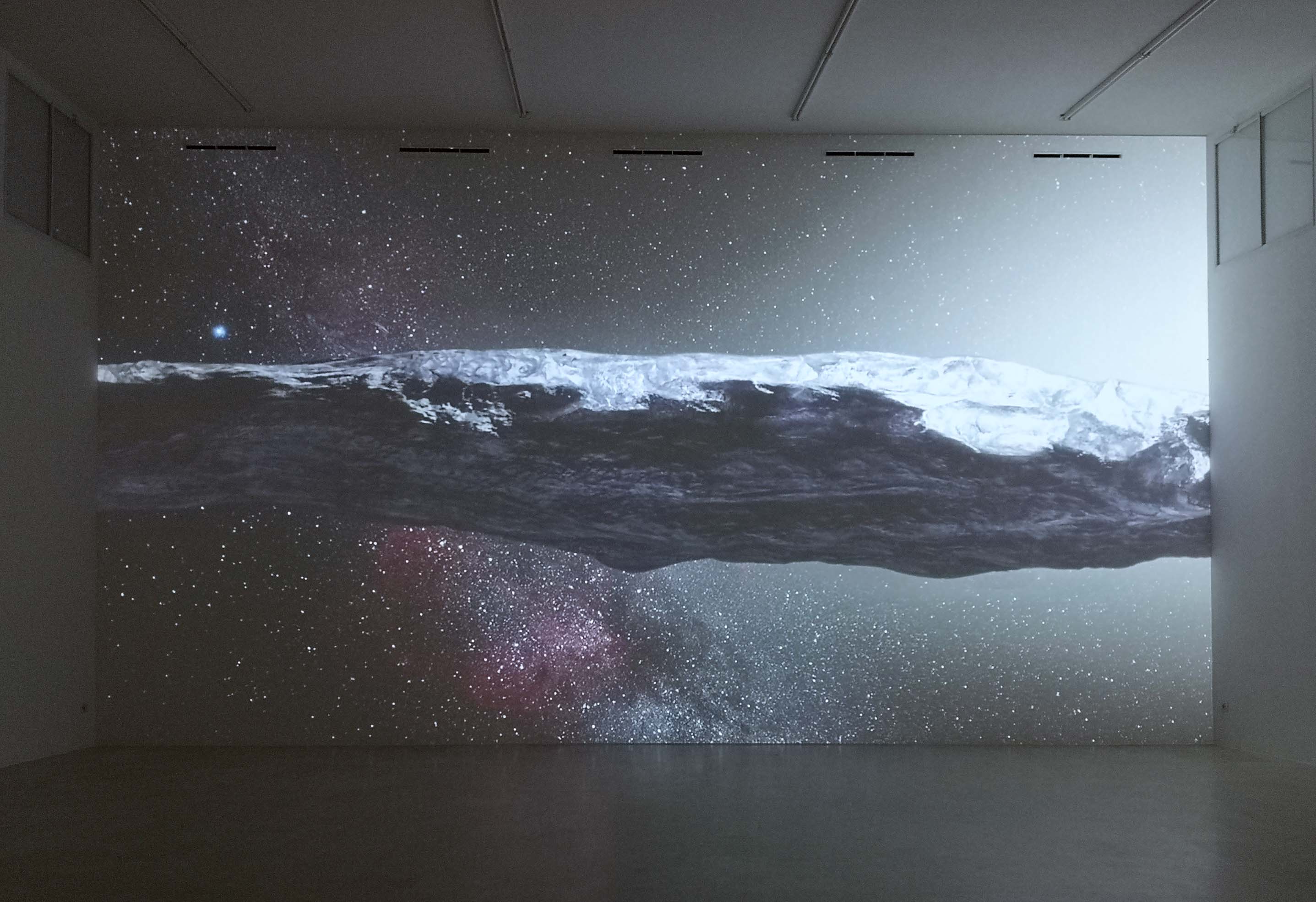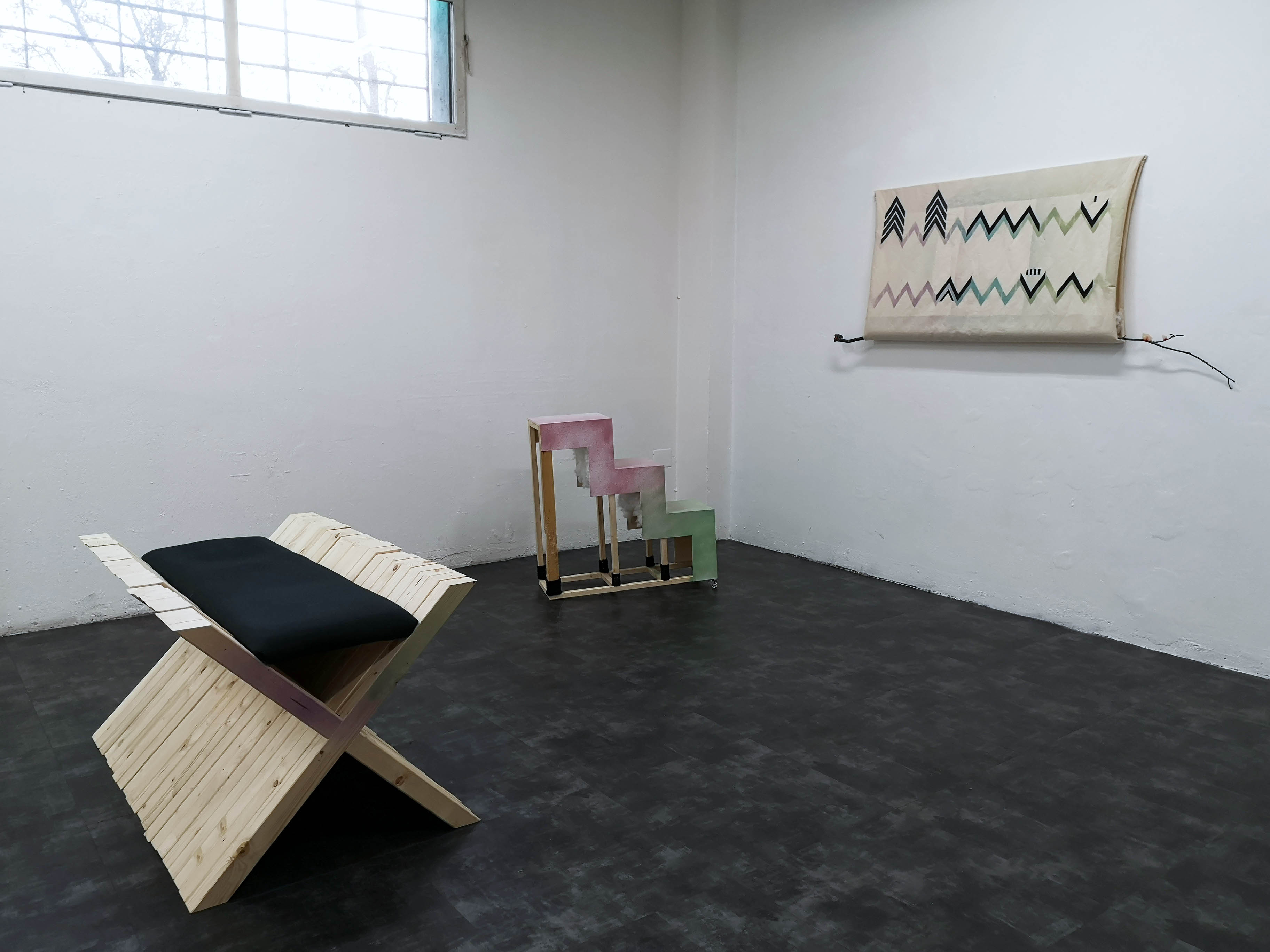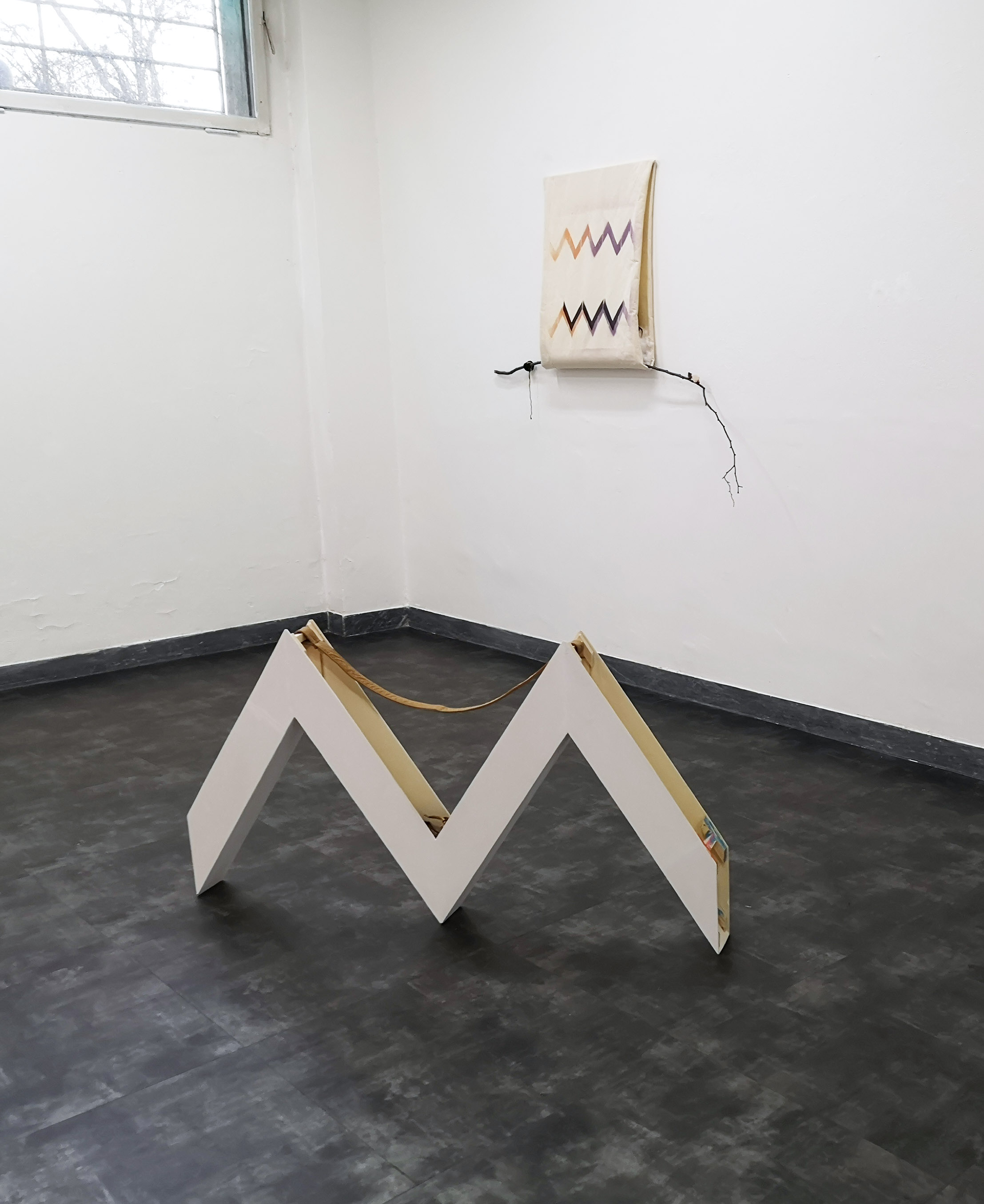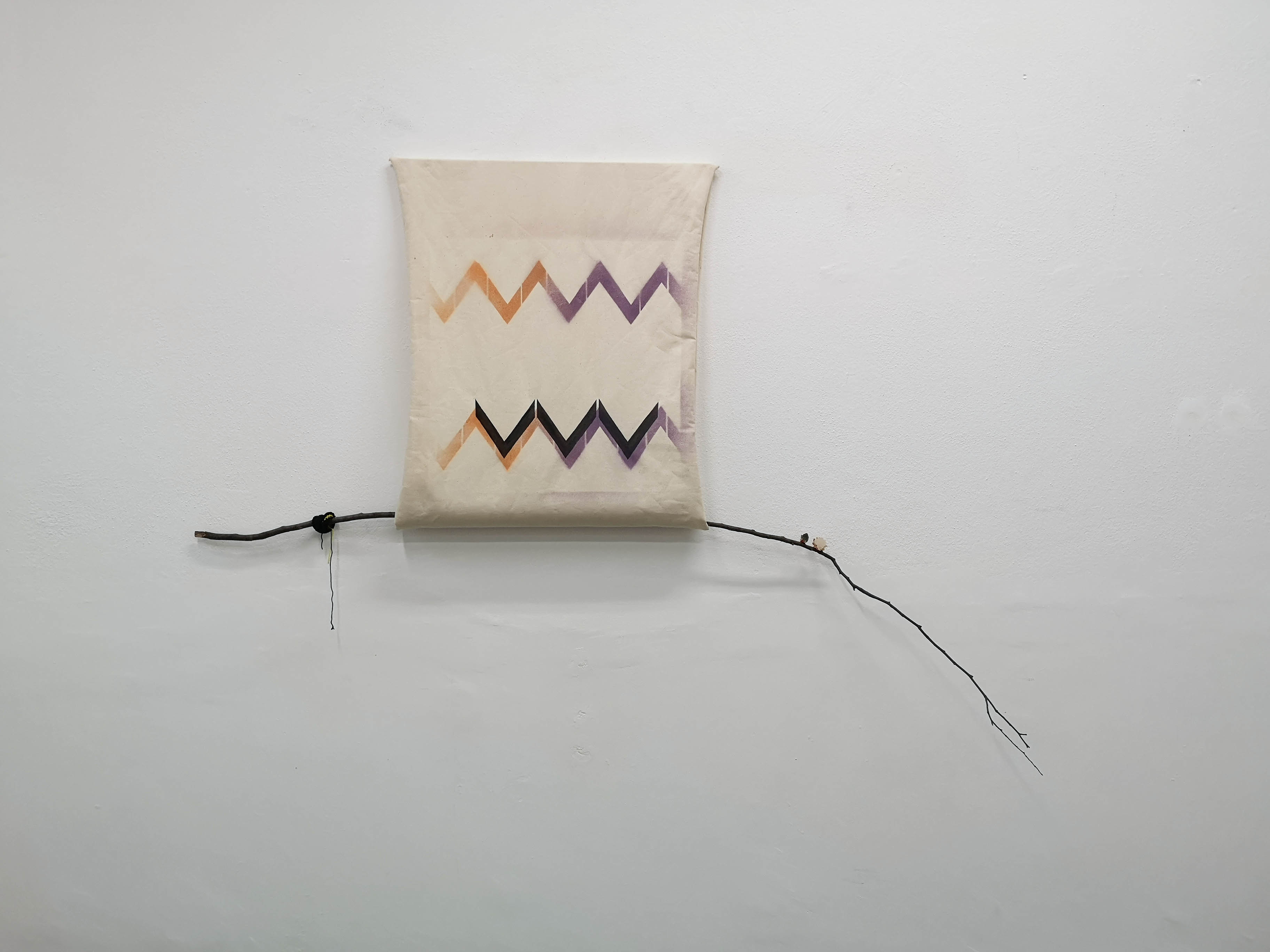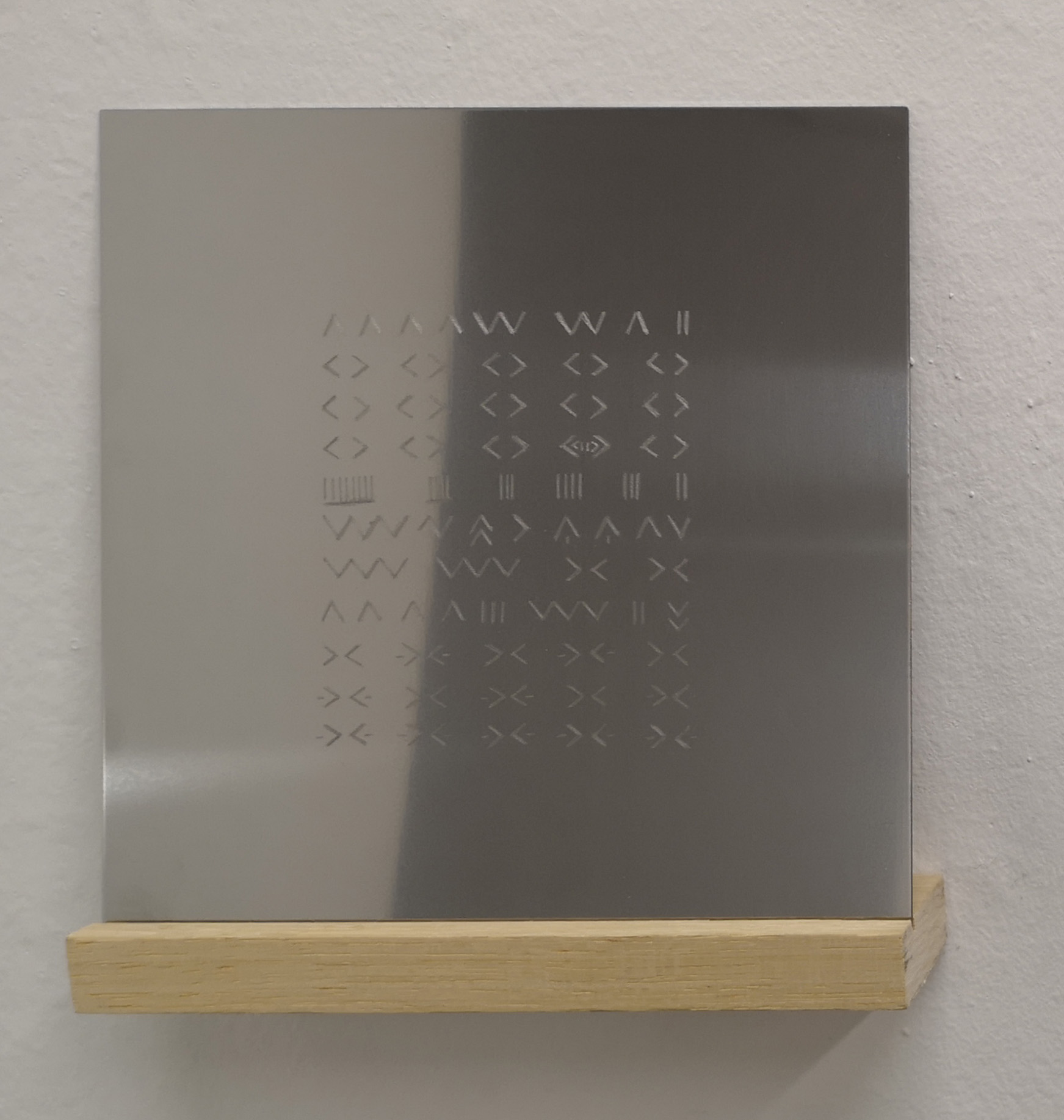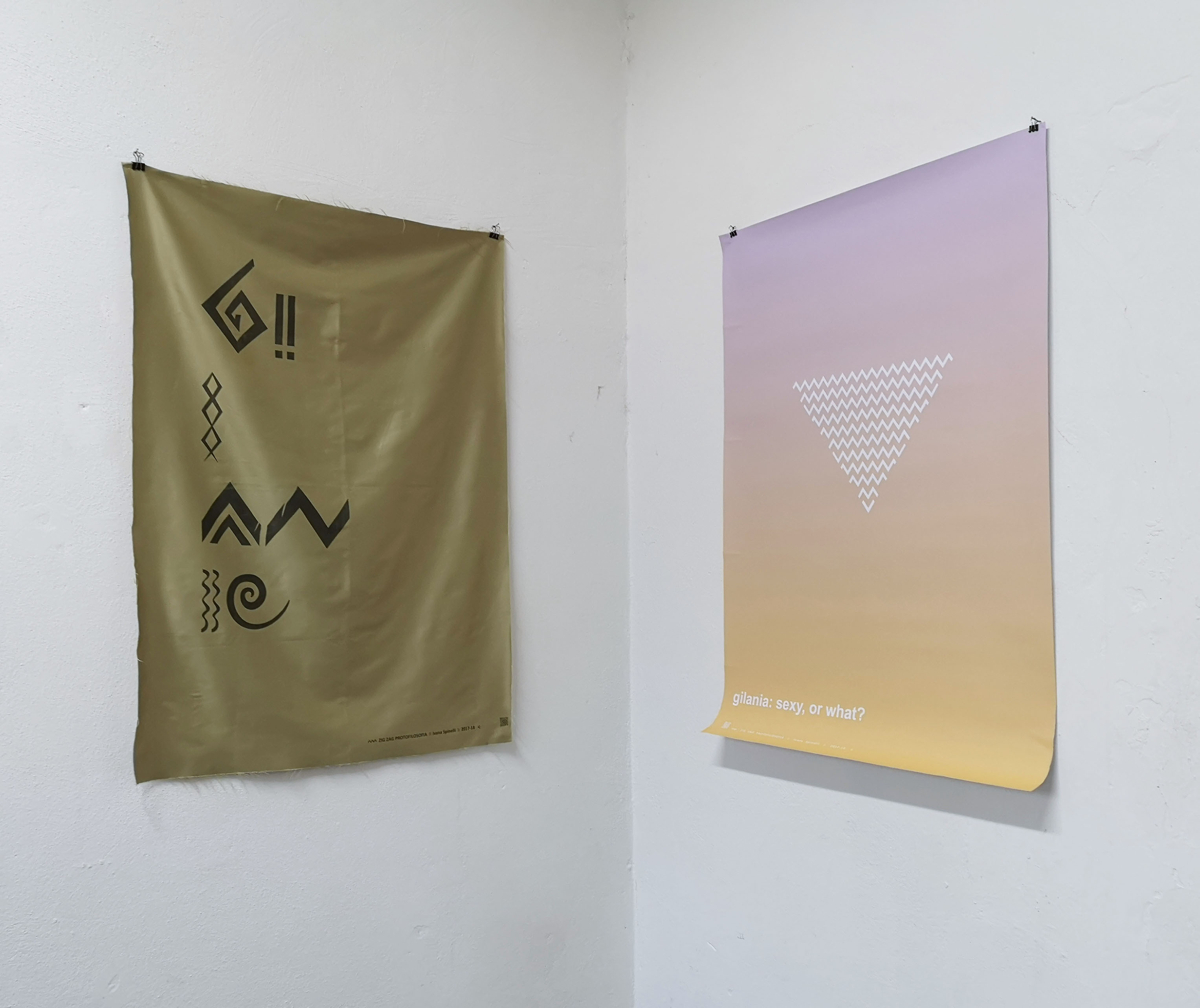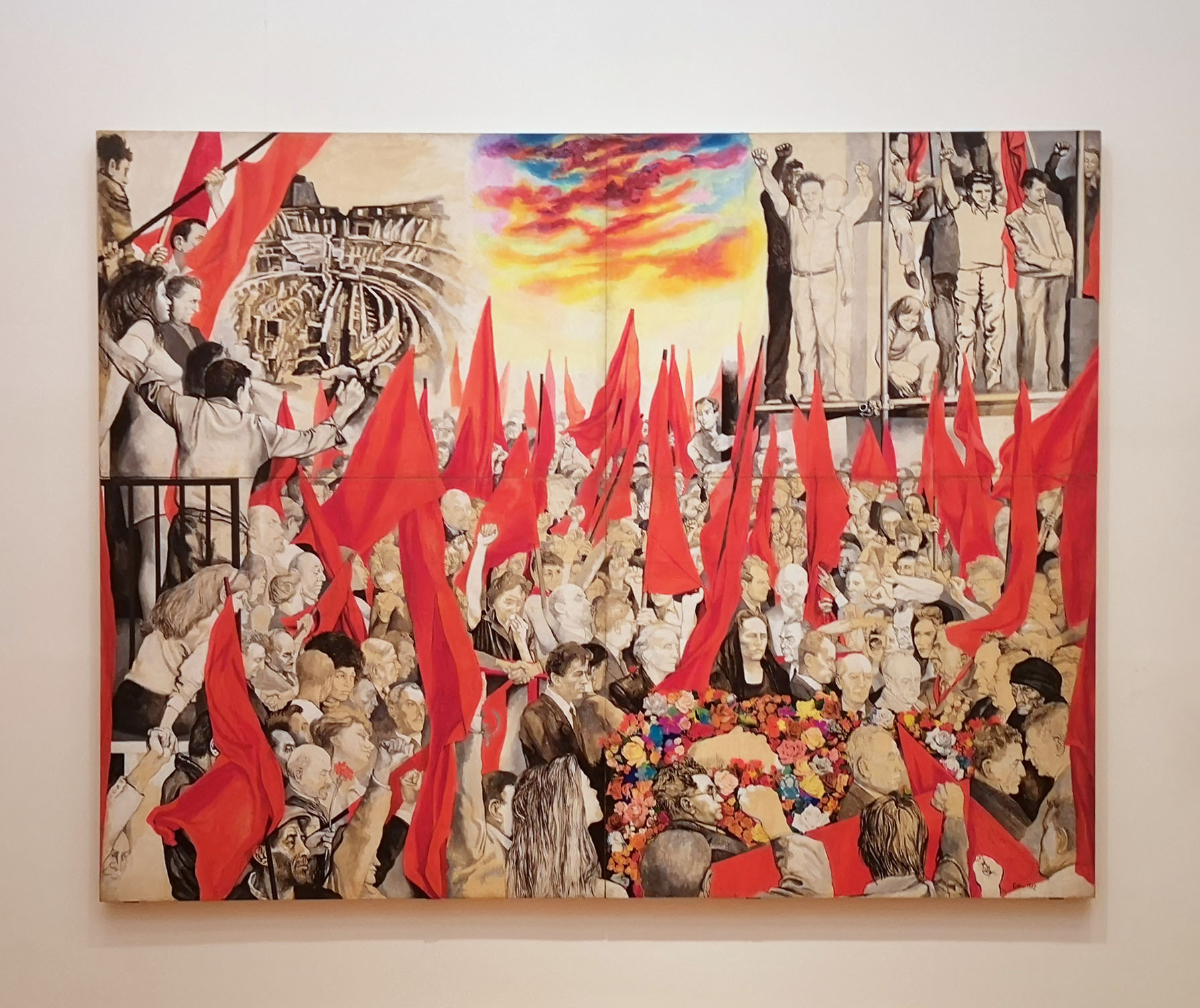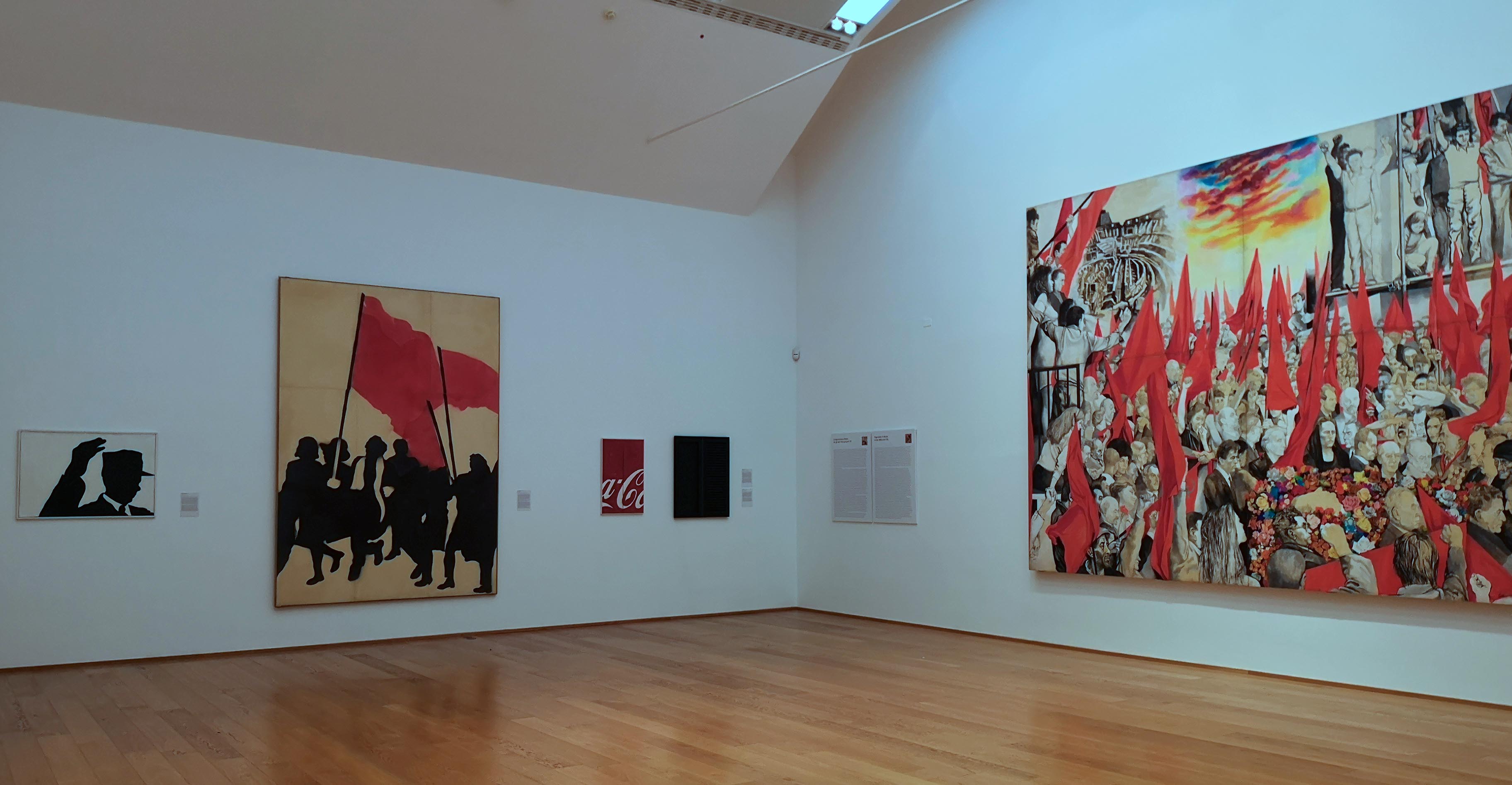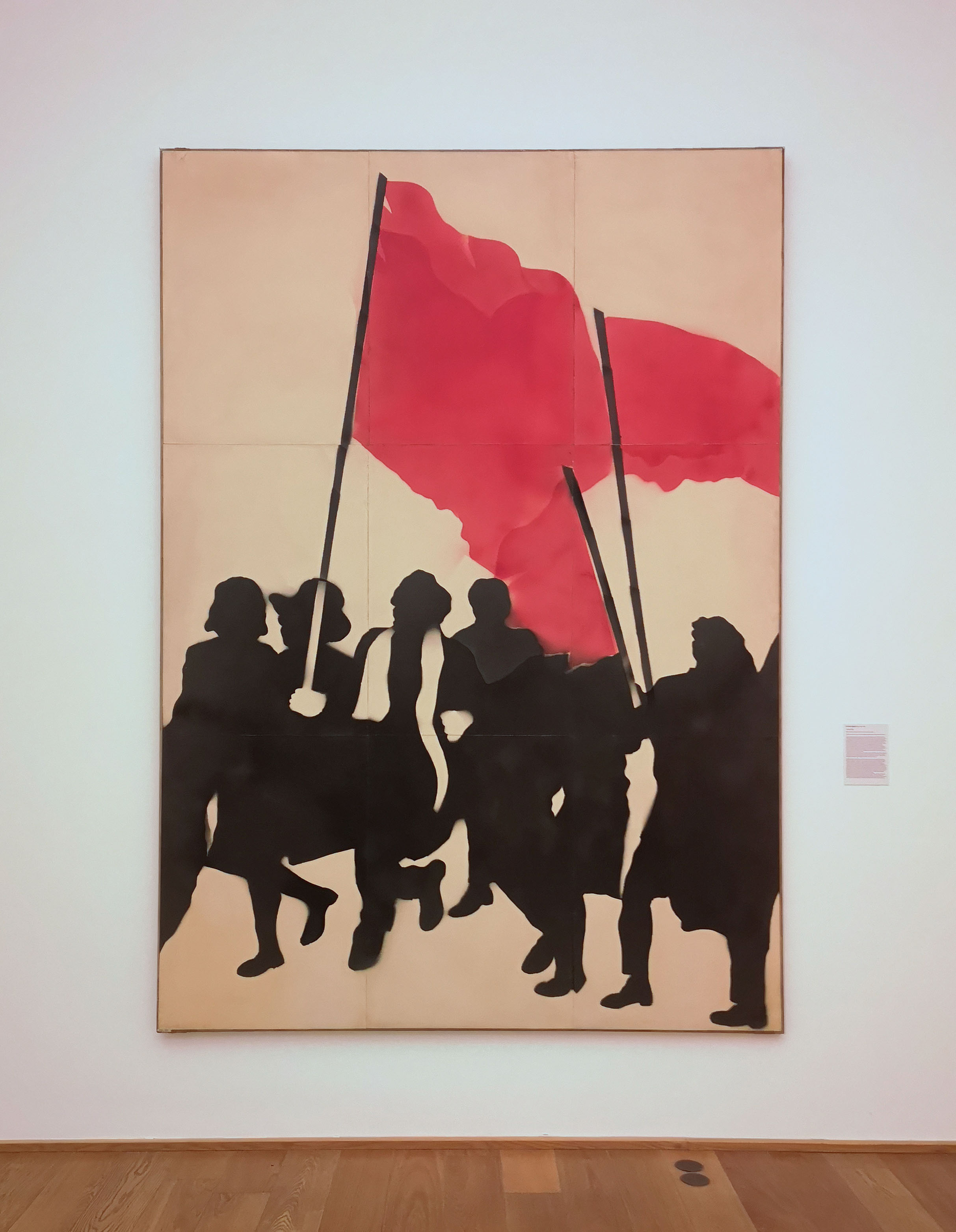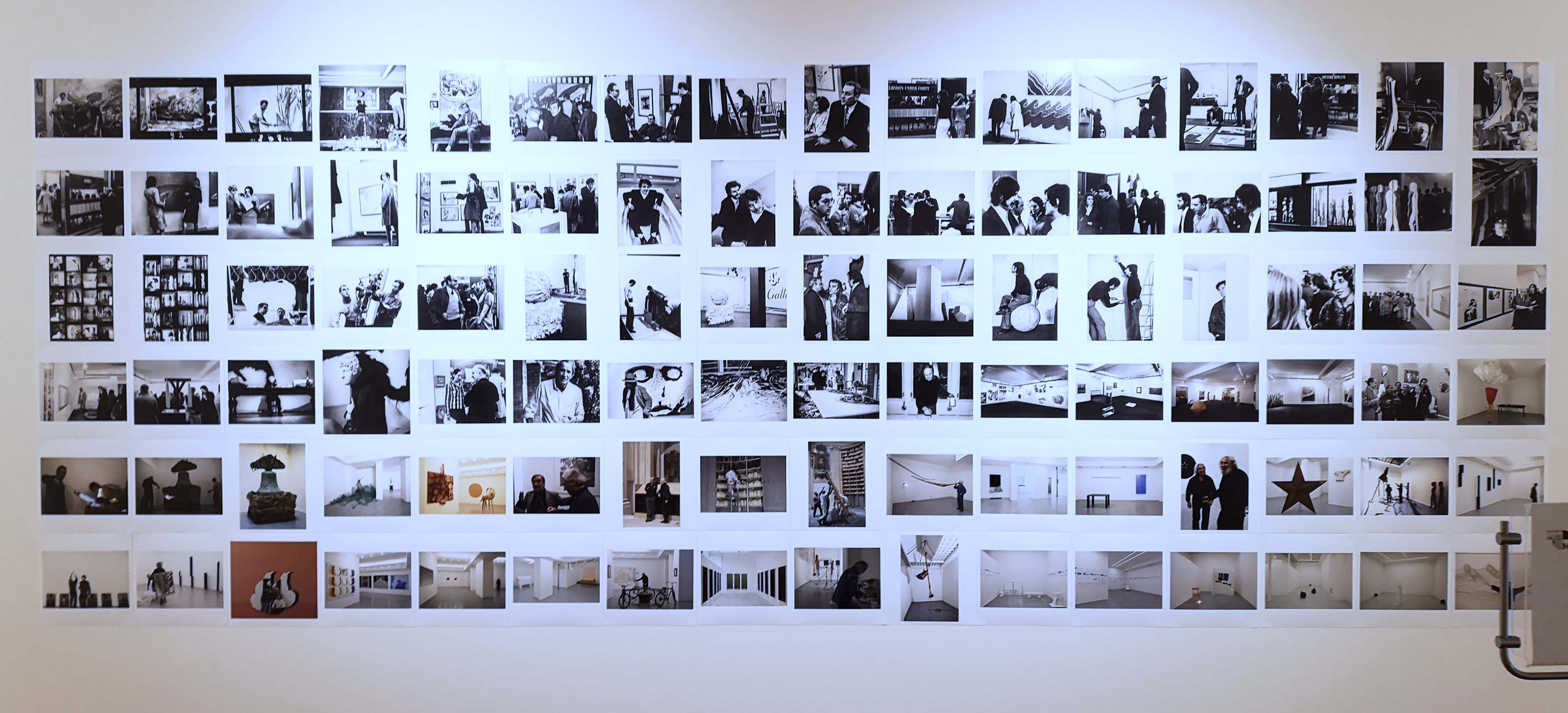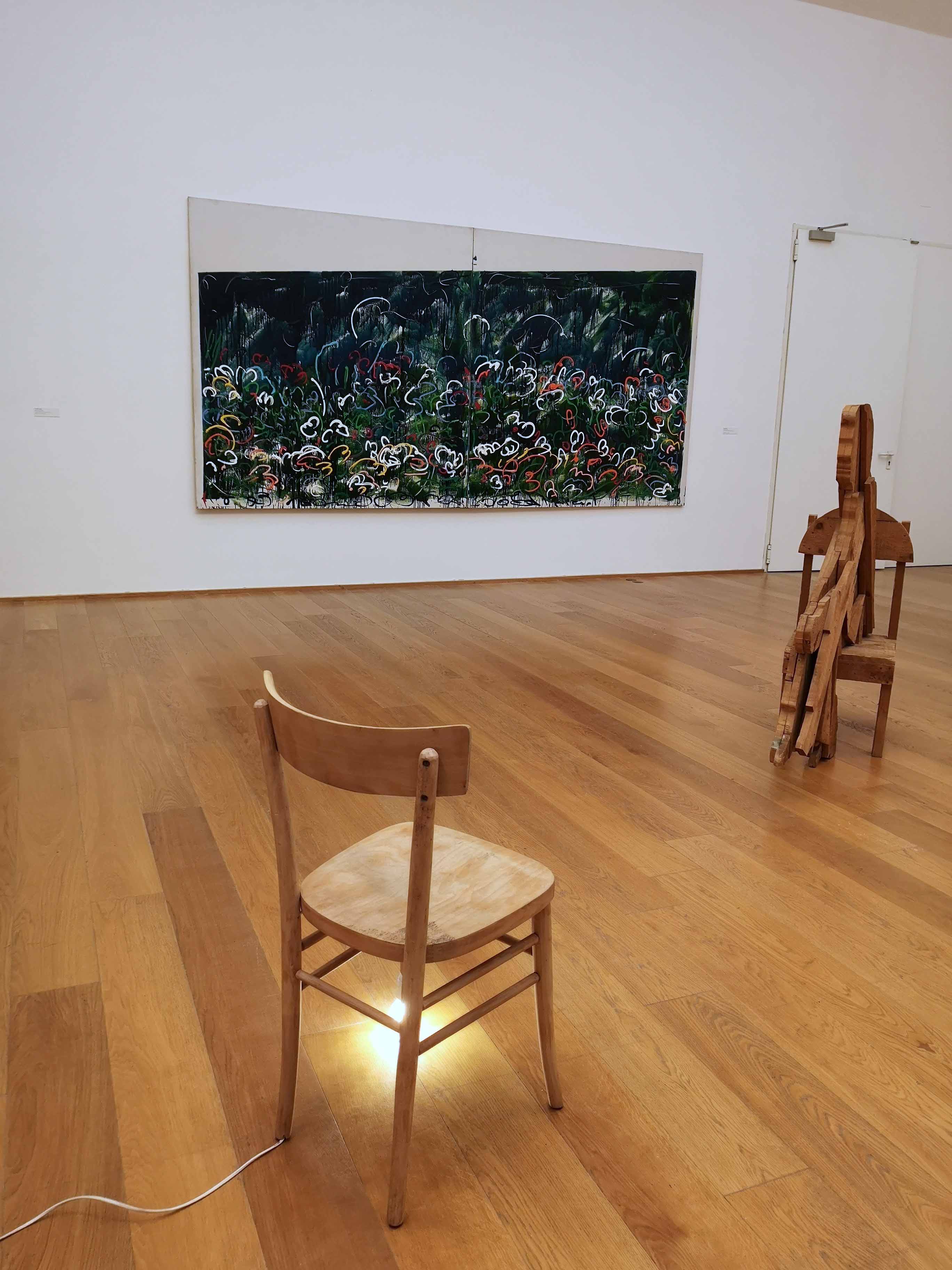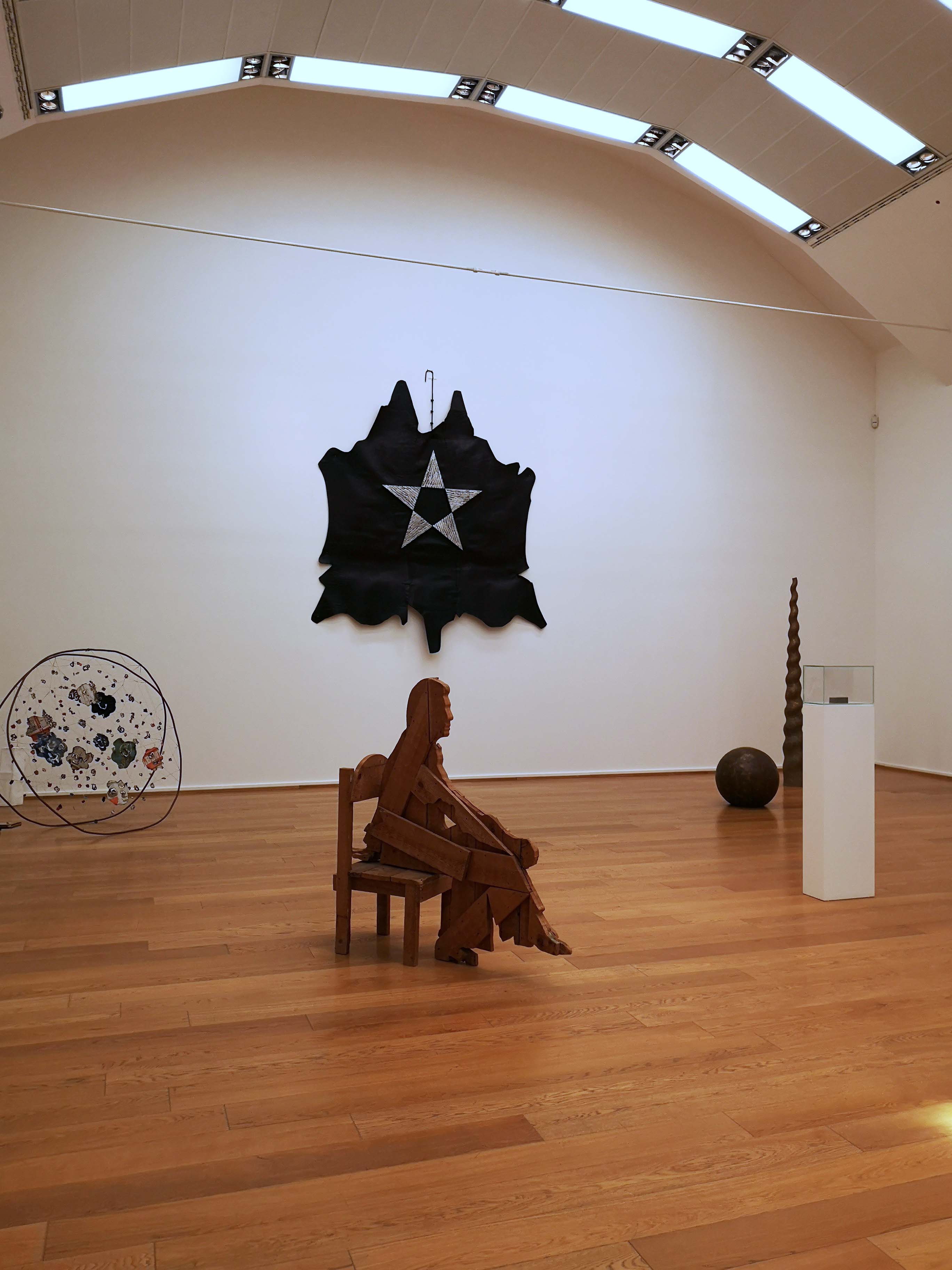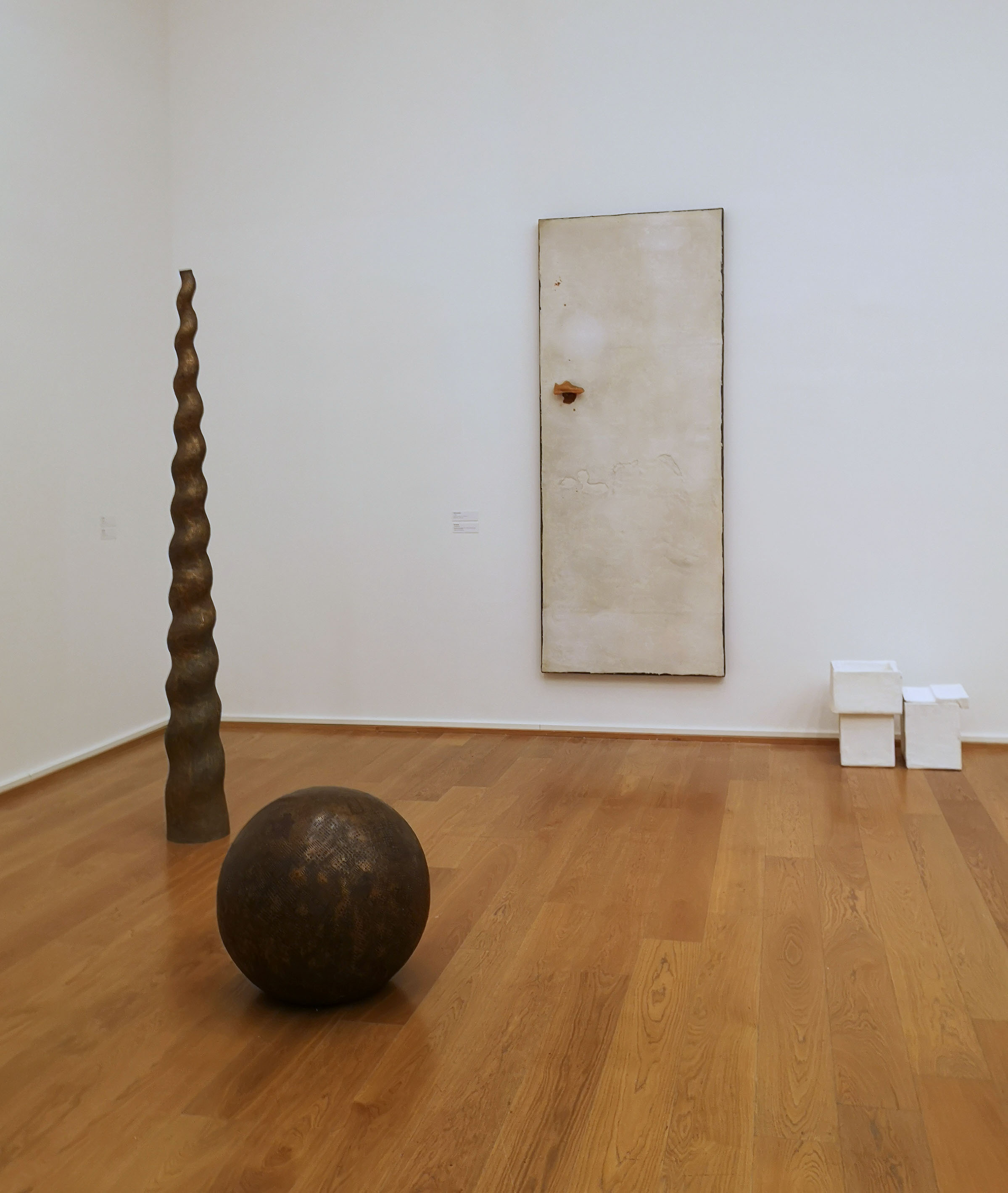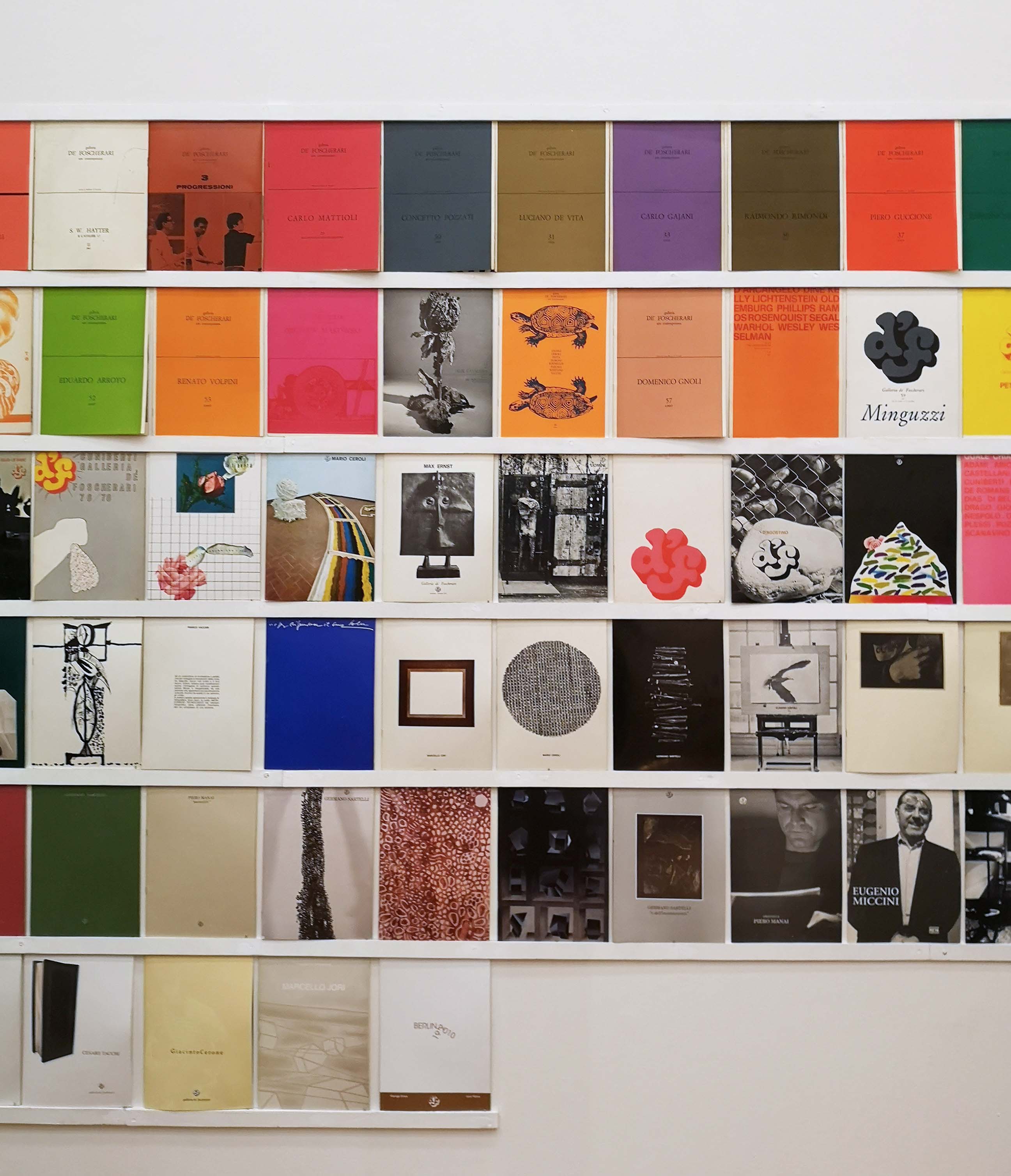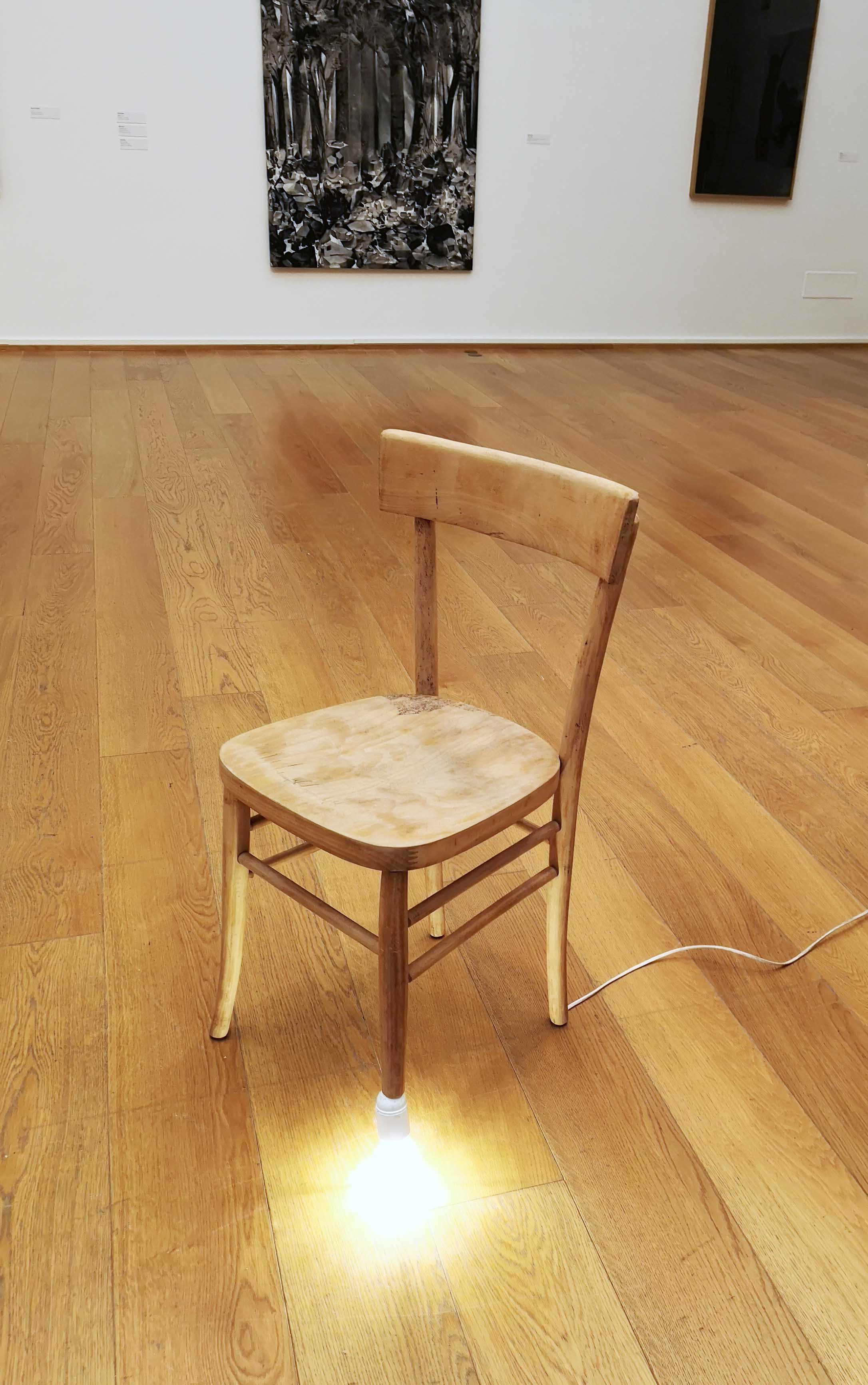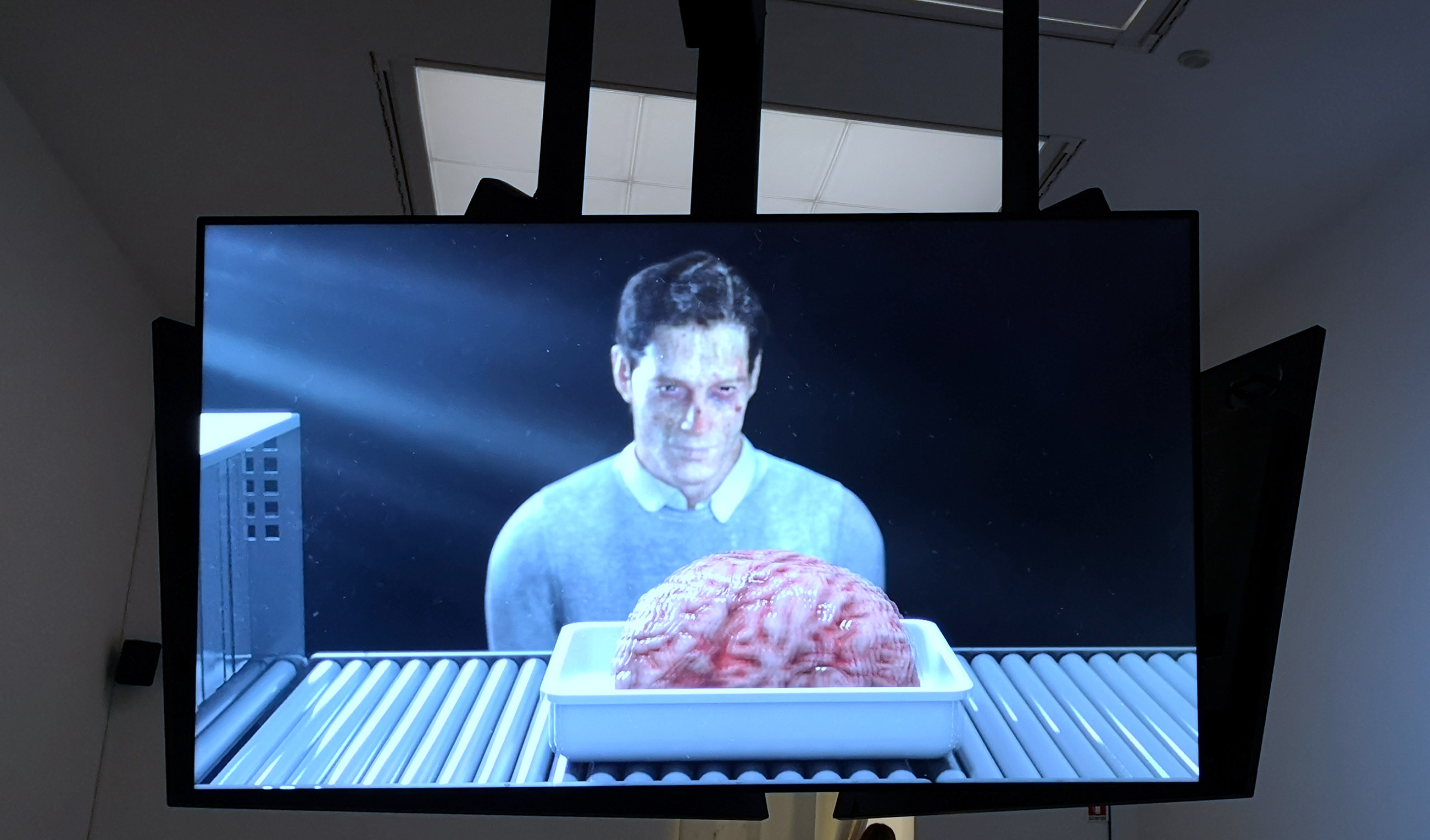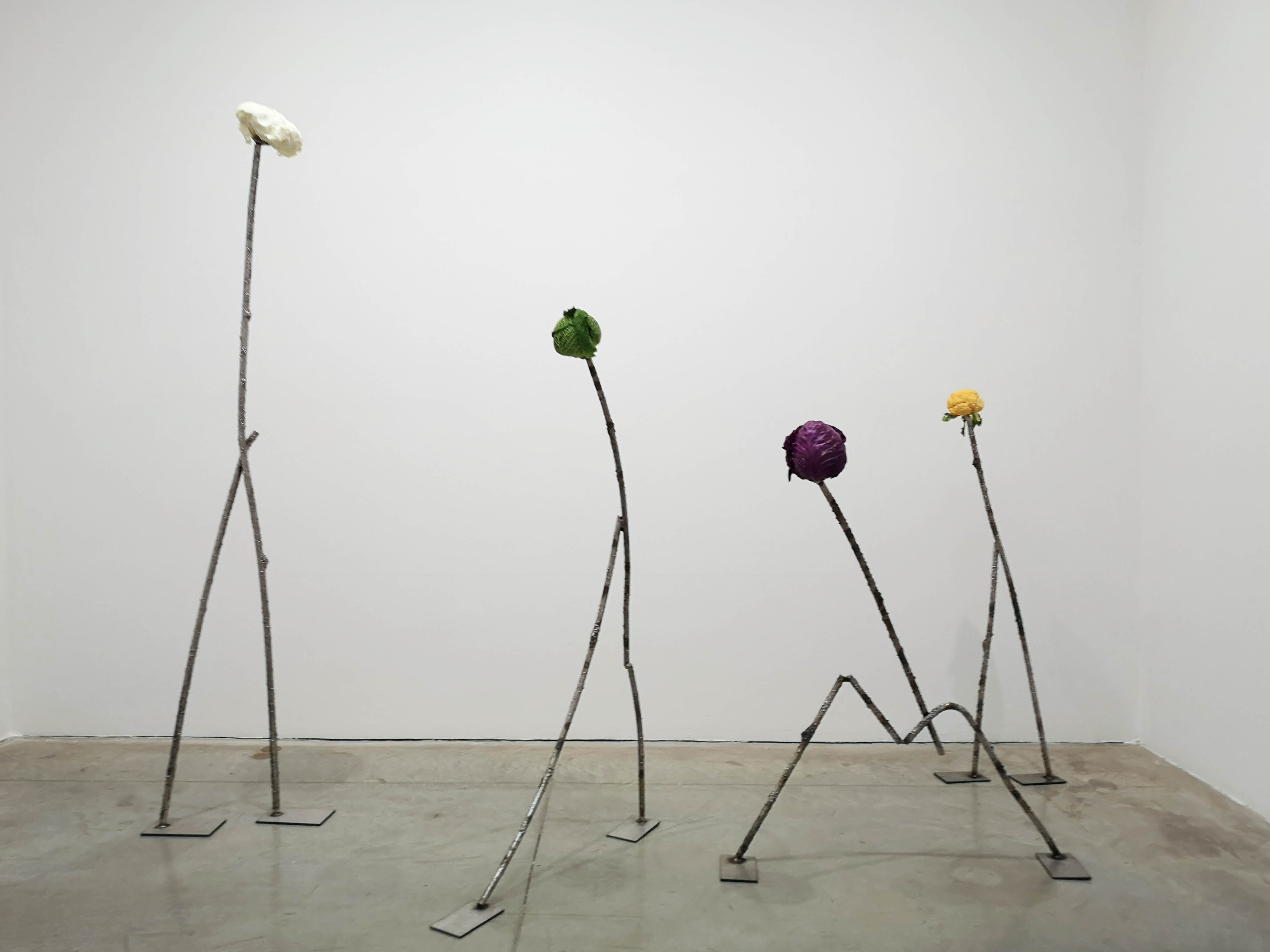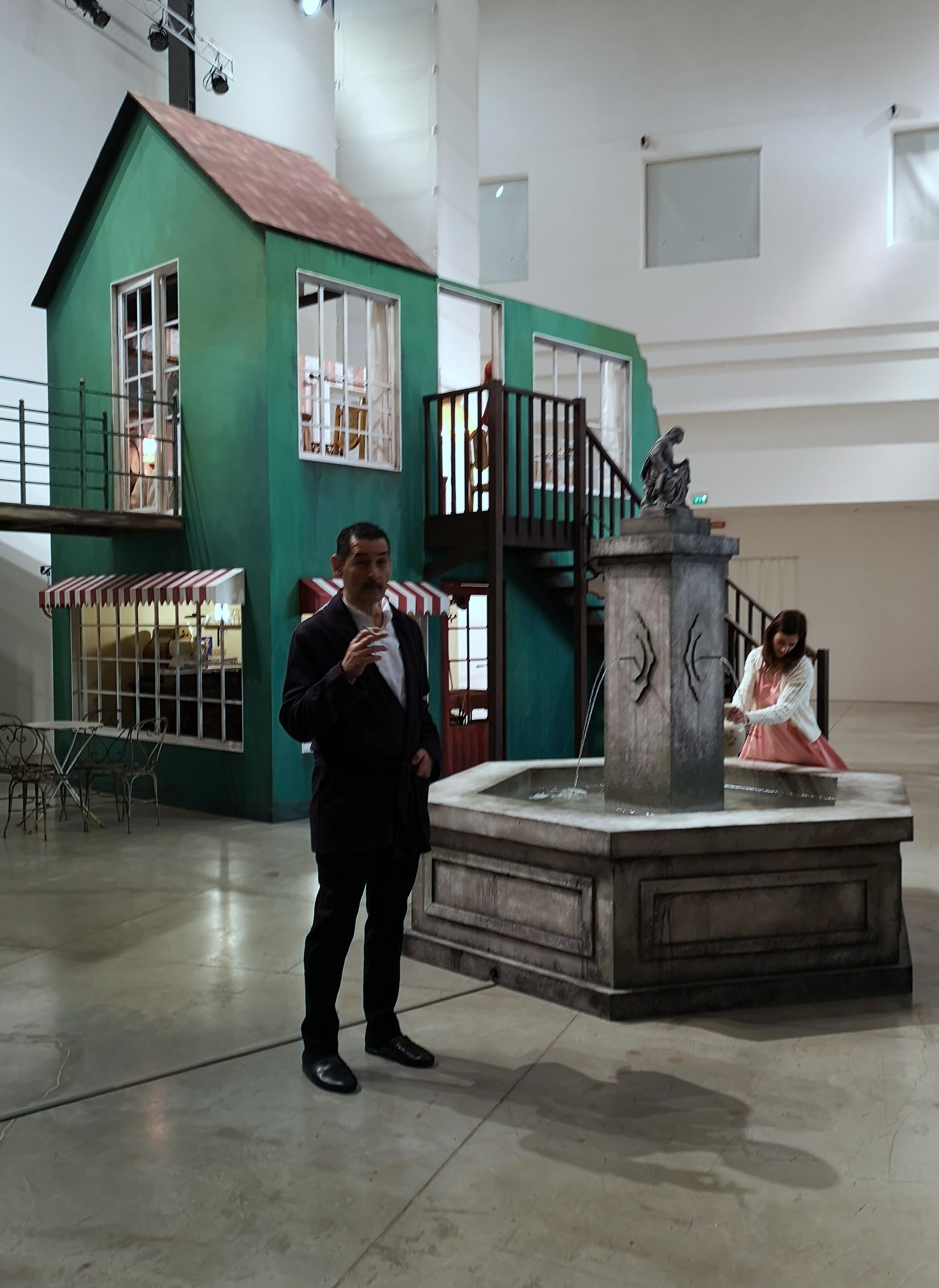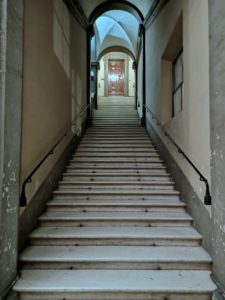 For the second part of our Art City tour throughout Bologna, we concentrate on the western area of the city centre. Some exhibitions glance at our present, others are going back in history, partly back into archaic times. There are excursions into dream worlds, human or android; forms or colours are featured and our perception is challenged to (re)discover familiar and unknown fields.
For the second part of our Art City tour throughout Bologna, we concentrate on the western area of the city centre. Some exhibitions glance at our present, others are going back in history, partly back into archaic times. There are excursions into dream worlds, human or android; forms or colours are featured and our perception is challenged to (re)discover familiar and unknown fields.
Spazio Carbonesi: Silvia Camporesi – Circular View
Galleria Studio G7: Ann Veronica Janssens
Adiacenze: bn+ BRINANOVARA – Dreamt Uncanny Valley
Ono Arte Contemporanea: Chernobyl – l’ombra lunga. Fotografie di Gerd Ludwig
Casagallery Itinerante: La Passione di Santa Margherita
CAR DRDE: Elia Cantori – Shadow in process
LocaleDue: Giulio Delvé – UE o non UE
P420: Franco Vaccari – Migrazione del reale
Gallleriapiù: Contropelo – Ivana Spinelli
Silvia Camporesi. Circular View.
Spazio Carbonesi, Palazzo Zambeccari
Via De’ Carbonesi 11, Bologna
www.gruppohera.it
24 January – 24 February 2020
“Circular View” by Silvia Camporesi, is part of a project, commissioned by the waste disposal and energy supply company Gruppo Hera. During one year, Silvia Camporesi visited the construction zone of the biomethane plant in Sant’Agata Bolognese every month. The completed structure transforms organic waste into natural gas. As complement to the show, a photobook was released with images, which illustrate the genesis of the construction.
In the exhibition, there are eleven large-sized photos, installed in lightboxes emerging in the dark. Depicted are views of the structure, but also single construction tools, heaps of waste and intermediate products. The settings are chosen to underline the aesthetic character of every single element. Moreover, the whole arrangement permits interesting outlooks where two or more images communicate.
Ann Veronica JanssensGalleria Studio G7
Via Val D’Aposa 4A, Bologna
/ Cappella di Santa Maria dei Carcerati, Palazzo Re Enzo
Piazza del Nettuno 1, Bologna
www.galleriastudiog7.it
20 January – 23 March 2020
Ann Veronica Jannssens’ installation in the Galleria Studio G7 might be a little bit minimalistic, but subtle. However, it takes up the entire space. Two coloured spots illuminate one of the white walls. The light is reflected at the other room-boundings, so that the whole chamber is bathed in coloured shades. This play of light finds a climax in a matt metal rhombus at the wall opposite to the spots, where the tinted echo produces a different effect than on the white painting. It is relaxing to consume the atmosphere. Moreover, it enables a new perception of the environment and of oneself.
The installation in the chapel of Santa Maria dei Carcerati is also very discrete. Nevertheless, the three mirrors on the floor expand David Tremlett’s wall paintings. In 2003, the artist’s aim was to enlarge the spatial impression by ideal landscapes. Now the visitor in the small room experiences an additional extension into the ground.bn+ BRINANOVARA: Dreamt Uncanny Valley
Adiacenze
Vicolo Spirito Santo 1, Bologna
www.adiacenze.it
24 January – 7 March 2020
For the site-specific exhibition, the artist duo bn+ BRINANOVARA (Giorgio Brina and Simone Novara) was inspired by dreams, might it be human visions or the ones of androids. Androids, even though different from human beings, are longing to try empathy. Correspondingly, the show takes us into a dream world. Here unexpected objects occur, which could awake memories. This is intended by the artists: they want to find out, if a human being could develop empathy with the artworks on view.
Presented are pieces that seem to be known, though the artist duo integrated disturbances. The damask wallpaper is black, not white as to be expected; Vittore Carpaccio’s knight has dropped parts of his armament and Damien Hirst’s diamond skull has lost its encrustation. All this might be a nightmare for the quoted artists. Nevertheless, the skull is an attractive installation behind a transparent curtain, where the black head is enthroned on a hill of its detached precious stones, enveloped by comfortable yellow light.
Chernobyl: l’ombra lunga. Fotografie di Gerd LudwigOno Arte Contemporanea
Via Santa Margherita 10, Bologna
www.onoarte.com
32 January – 15 February 2020
A very different kind of nightmare shows Ono Arte with the long shadow of Chernobyl. On Saturday 26 April 1986 occurred a nuclear meltdown, which contaminated not only the direct environment, but also many parts of Western Europe. Since 1990, the photographer Gerd Ludwig travelled the ancient republics of the former USSR, to document the effects of the dissolution of the federal state. In 1993, he visited for the first time Chernobyl and was in 2005 the first western photographer to enter the nuclear plant and the reactor No. 4, where the incident took place. Gerd Ludwig returned in 2011 and 2014, to complete his researches. His photos witness not only the situation in the centre of the disaster, but also the impact on the direct environment like abrupt left places and the social and health consequences, which still exist, even for the coming generations.
La Passione di Santa MargheritaCasagallery Itinerante
Museo della Resistenza
Via San Isaia 20, Bologna
www.casagalleryitinerante.com
22 – 31 January 2020
By tradition, the exhibitions of the Casagallery Itinerante are site-specific. Already hosted several times by the Museum of Resistance, the invited artists focus on the figure of the Saint Margaret of Antioch. Depictions of her, are visible in the museum’s hall, due to its past as a convent. This saint inspired the presented artists with regard to the pictures in place, but also by her legend and patronage. The artists are Barbara Ceciliato, Roberta Fanti, Serena Shan Yang Lin and Tomomi Takamatsu.
Elia Cantori: Shadow in processCAR DRDE
Via Azzo Gardino 14/a, Bologna
www.cardrde.com
23 January – 21 March 2020
At the gallery CAR DRDE, Elia Cantori visualises, in his own tradition, the genesis of his oeuvres. At the same time, he focusses on negatives to reveal new details and spaces. For his series Untitled (Photopsyche), which reminds the Rorschach tables from psychoanalysis, he poured a fluorescent liquid on photosensitive paper. The resulting photograms are showing dark zones where the illuminant touched the sheet. Untitled (Double Absence) is a portray of a broken mirror, replicated in aluminium. However, the shards only describe the space; the original mirror once has taken. In the untitled series (1 : 1 Map) the process of creation remains particularly visible. The aluminium castings of geographical maps show traces of the melting sand. Even though, the reproductions bear the same marks like dimensions and folds as the original plans, they are thicker as the paper and take up more space. Therefore, they recall in their three-dimensionality the depicted landscapes on the maps.
Mono 7, Giulio Delvé: UE o non UELocaleDue
Via Azzo Gardino 12/a, Bologna
www.localedue.it
16 January – 25 February 2020
LocaleDue continues its exhibition series “Mono”, where it only presents one single oeuvre, without any curatorial, biographical or critical information. The only given information is the artist’s name and the title of the work. Appropriate to the Brexit, Guilio Delvé’s PVC-banner is called “UE e non UE”. Nevertheless, the title might refer to the origin of durum wheat for the production of pasta. Actually, the banderole is an enlarged replica of a noodle package, released by the FEAD (Fund for European Aid to the Most Deprived). In the description of the content, the origin is vaguely formulated: “UE e non UE”.
Franco Vaccari: Migrazione del realeP420
Via Azzo Gardino
www.p420.it
23 January – 21 March 2020
The gallery P420 invites the visitor to emerge into Franco Vaccari’s dream worlds. Supported by the dimmed lightning, it can be directly experienced, when entering the gallery. Ten works of the artist’s long-term project are on view, which can be discovered when approaching closer. Only when the spectator is close to one oeuvre, a lamp above turns on. Then, one of Vaccari’s dreams from the 1980s can be contemplated. On view comes a collage made of drawing and text, which describes a particular oneiric image from a special day. Some images are more familiar than others are. Beyond that, new contexts arise. For example, there is a Mickey Mouse descending stairs. In the background, one could recognise a Marcel Duchamp quote, with forms from “Nude Descending a Staircase, No. 2”. Both motives are “existing” in the real world. Nevertheless, they are human inventions, but found their way into the artist’s dreams. Franco Vaccari commented this entanglement in 1985: “The real world has been emptied of reality, while at the same time reality has migrated towards the territory of dreams”, underlining that he is “attracted by the ‘real’ dimension of dreams”.
Another interleaving is produced in the monumental projection of the video “Oumuamua” (a messenger from afar arriving first). A stone in form a cigar approaches from far away, until filling the entire screen. Its environment seems to be the cosmos. It is a video simulation of the interstellar object “Oumuamua”, detected in 2017. Scientifically evidenced, the celestial body remains invisible for the human eye. Once again, reality and imaginary worlds are mixed. Contropelo. Ivana SpinelliGallleriapiù
Via del Porto 48 a/b, Bologna
www.gallleriapiu.com
23 January – 28 March 2020
Ivana Spinelli deals with prehistory and in particular with the beginnings of scripture. On focus in the exhibition is the zigzag, which outlasted in our subconscious and as decorative element until today. However, for the indigene people of ancient Europe, this sign meant water, important for survival. The artist includes the zigzag into her artworks. This could be in sculptural objects, where the meandering line becomes stairs or a portable element like a bag. Alternatively, it could be printed or engraved on different materials, sometimes besides other signs, for us hardly to decipher. In connecting the zigzag to organic or artificial components, Ivana Spinelli refers to the prehistoric origin of our contemporary time.
In doing so, the artist points to the Gilanic society, widespread throughout Europe during the Neolithic Age. Scientific researches, in particularly by Marija Gimbutas, established that it was an egalitarian, matriarchic and peaceful civilisation, later infiltrated by patriarchal people (Kurgan hypothesis). The concept of Gilanic society is confronted with our actual worldview like combing against the grain, as the exhibition title “Contrepelo” suggests.
Figurabilità. Pittura a Roma negli anni Sessanta. & Claudia Losi. Ossi.MAMbo – Museo d’Arte Moderna di Bologna
Via Don Minzoni 14, Bologna
www.mambo-bologna.org
22 January – 30 June 2020
After the realist-abstract debate, figuration returned within a group of artists residing in Rome in the 1960s. Influenced by Renato Guttuso and an ambience of emerging and interlaced galleries and art critics, they developed a visual language, including popular images and propaganda symbols. Partially, they referred to historical models. For the exhibition “Figurabilità. Pittura a Roma negli anni Sessanta” (Figuration. Painting in Rome in the 1960s), the MAMbo researched their archives with regard to this special period. In the hall dedicated to Guttuso’s “Funerali di Togliatti” (Togliatti’s Funeral) from 1972 are now some of the works presented, to communicate with this monumental painting.
Also included in the permanent collection, is Claudia Losi’s installation “Ossi” (bones), which goes even farther back into history. The ceramic replica of three whale-bones invites to reflect on the relation between history and nature by the reduction of this enormous mammal to its bones. Herewith, the sculpture refers to our imagination going back to archaic times. Additionally, in the Project Room the exhibition “La Galleria de’ Foscherari 1962 – 2018” is still visible (until 15 March 2020). It is dedicated to the influential Bolognese Gallery, which brought renowned artists and curators to the city, enriched by a cultural and editorial program. The show describes the gallery’s activity from the beginnings until 2018, when Pasquale Ribuffo, co-founder passed away. In the Sala delle Ciminiere, “AIGAINandAGAINandAGAINand” is not to be missed. Here seven international artists are reflecting on the eternal loop. (until 3 May 2020)
